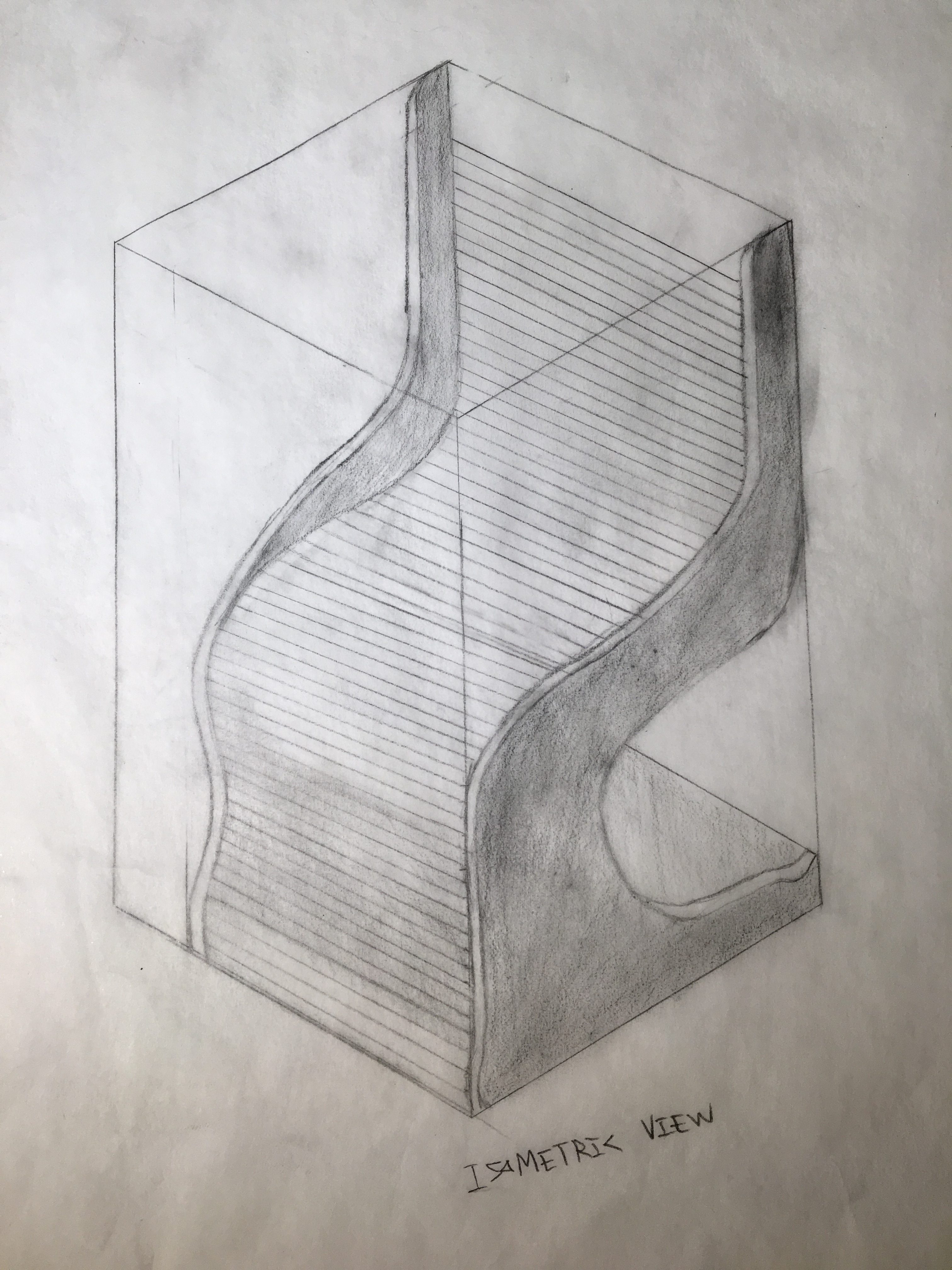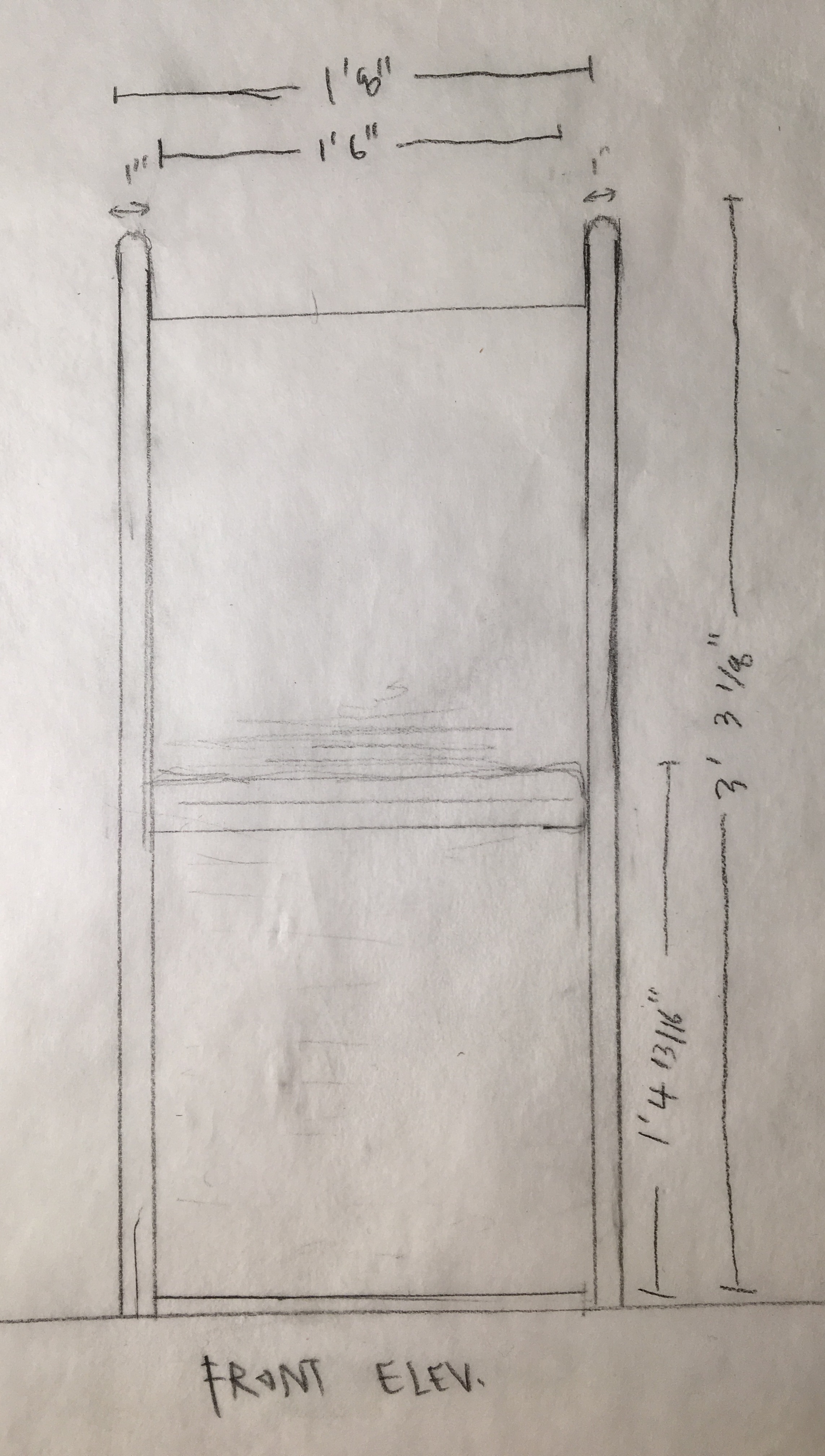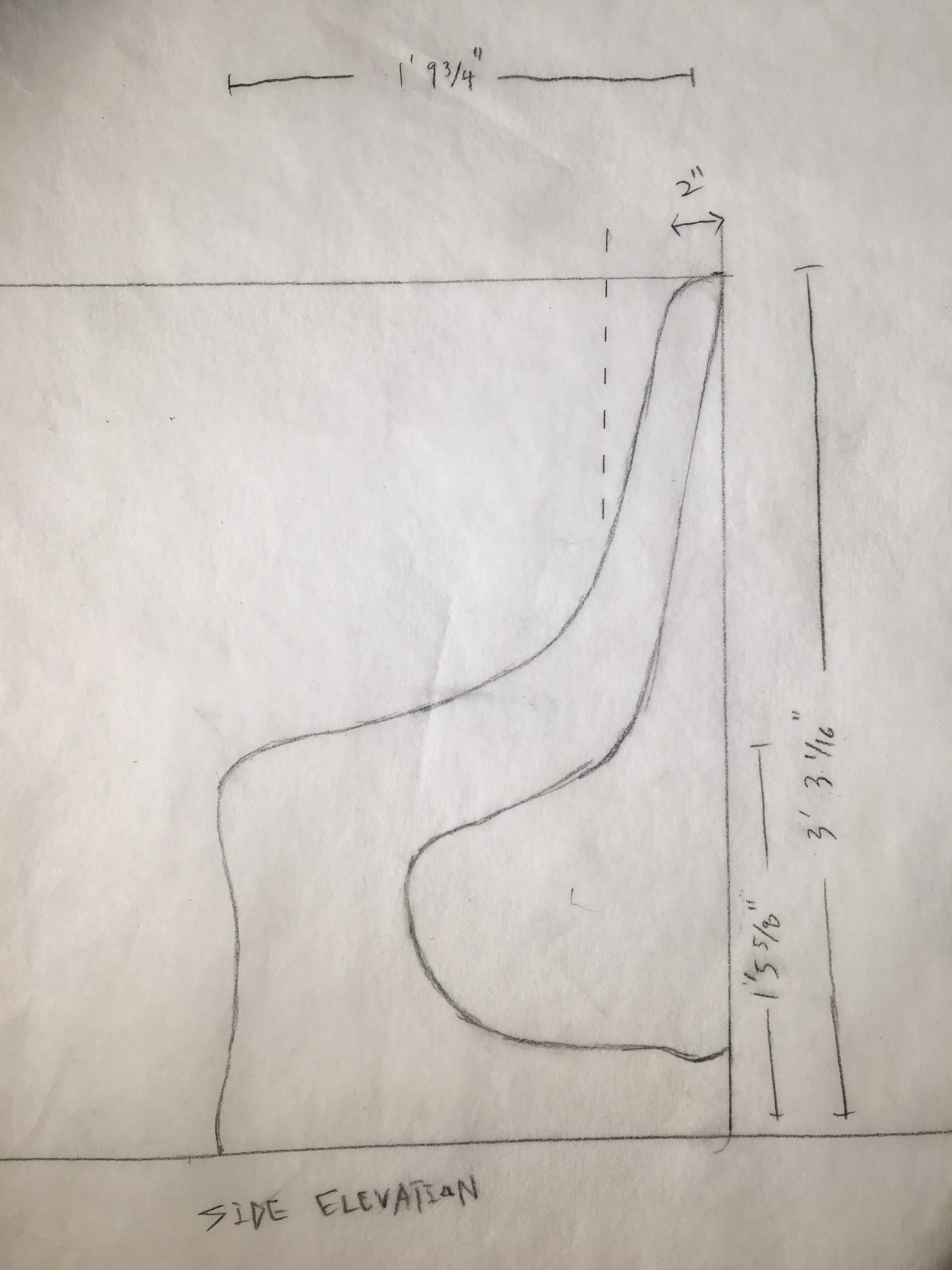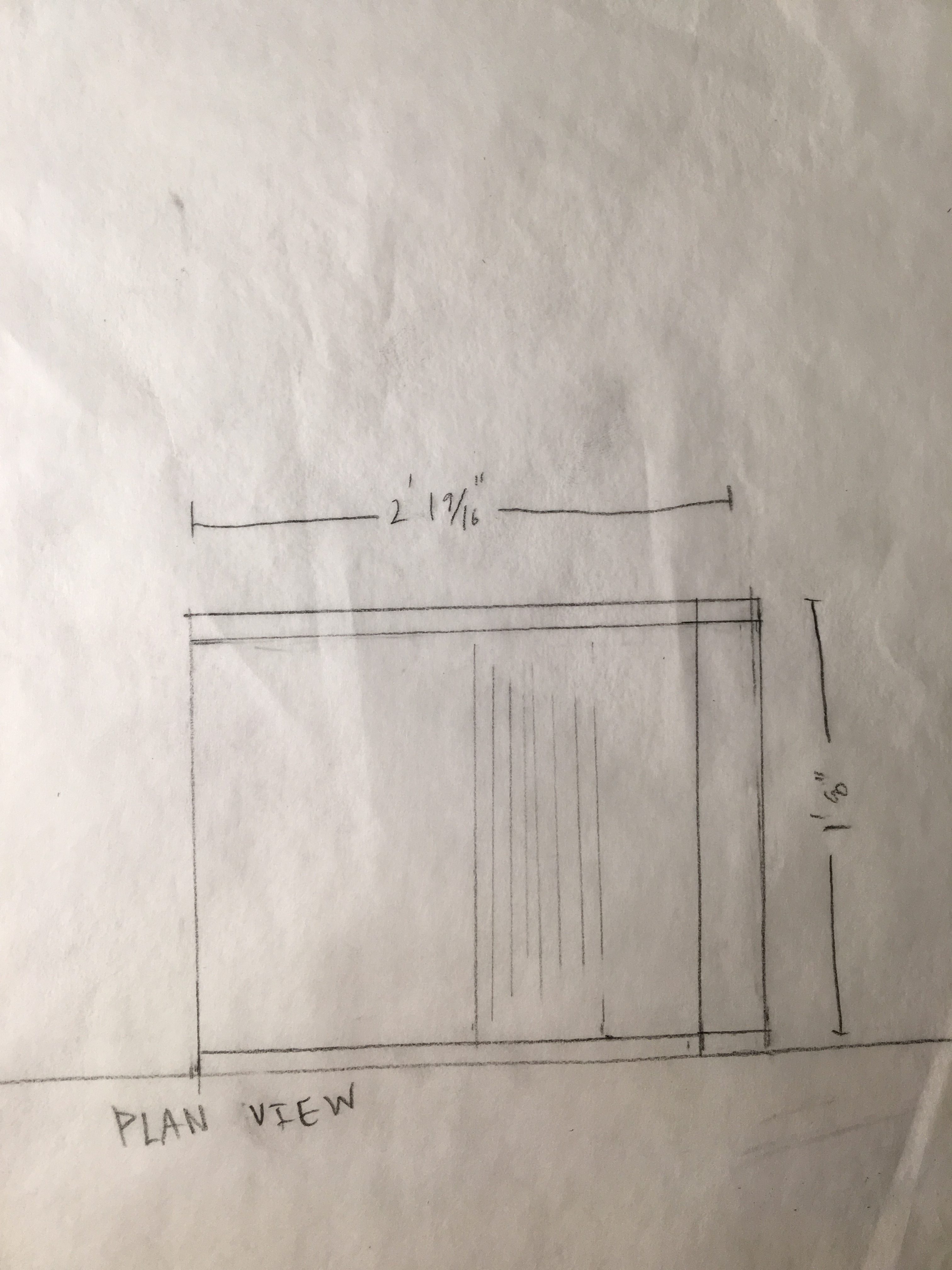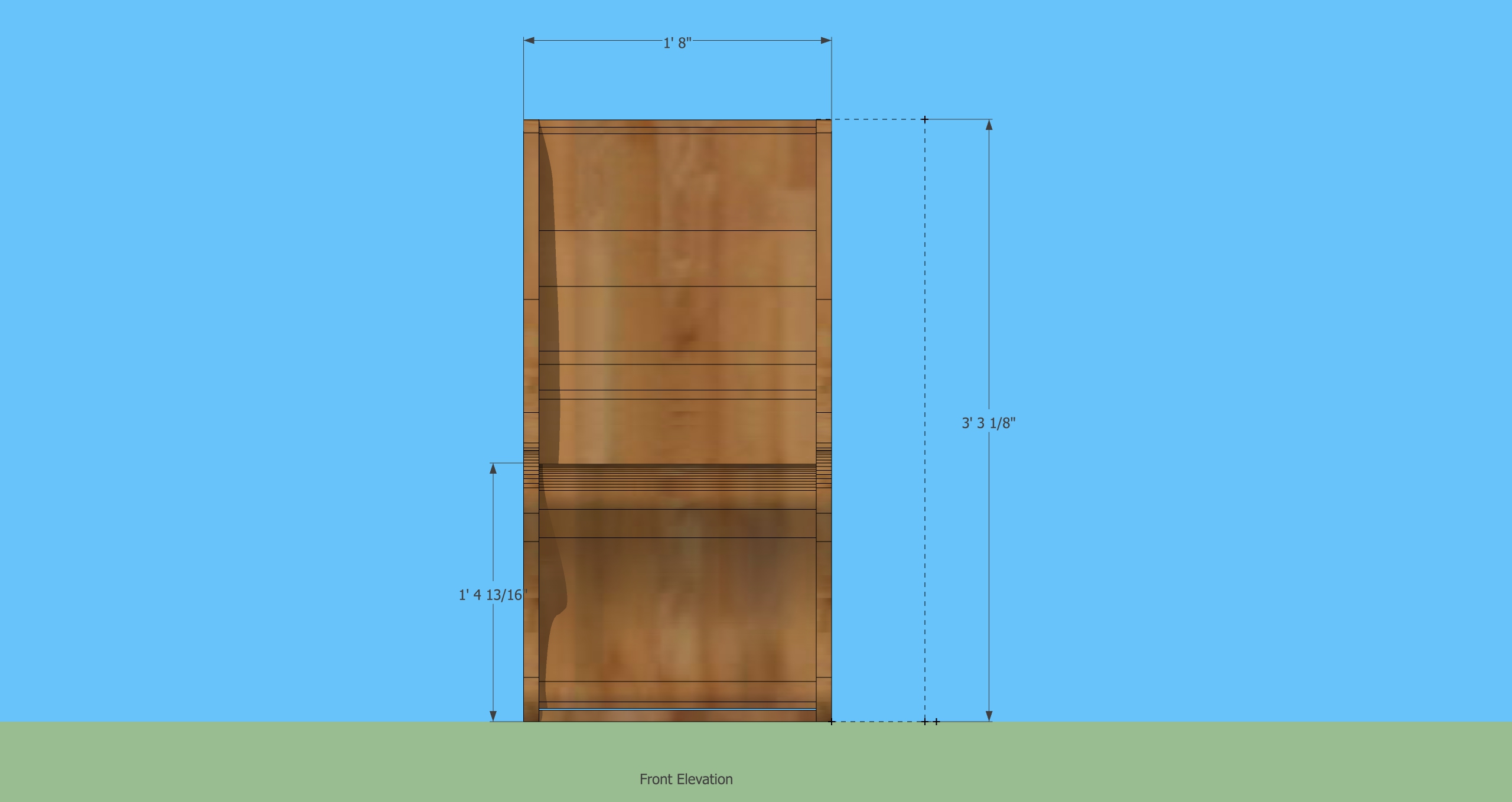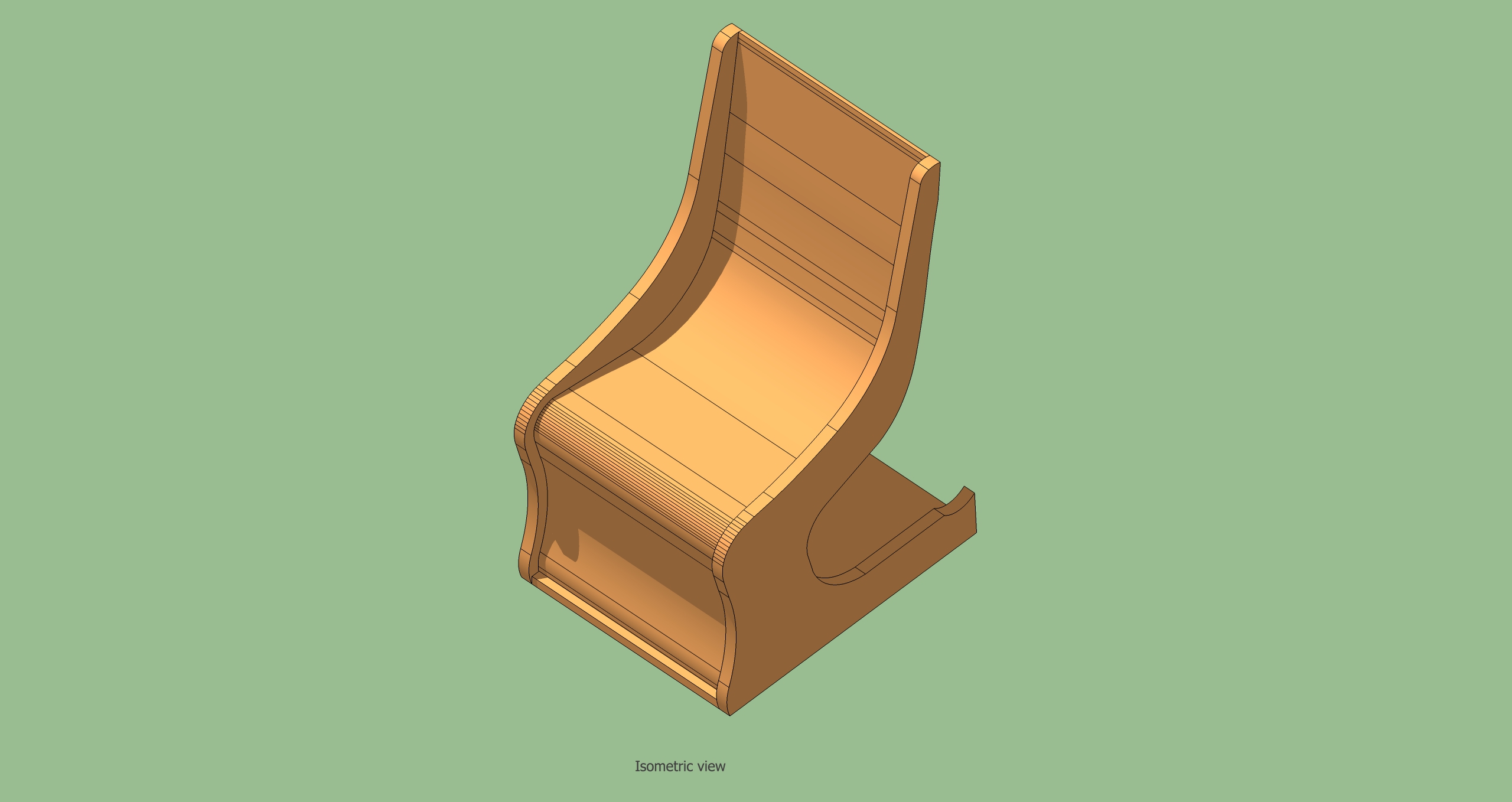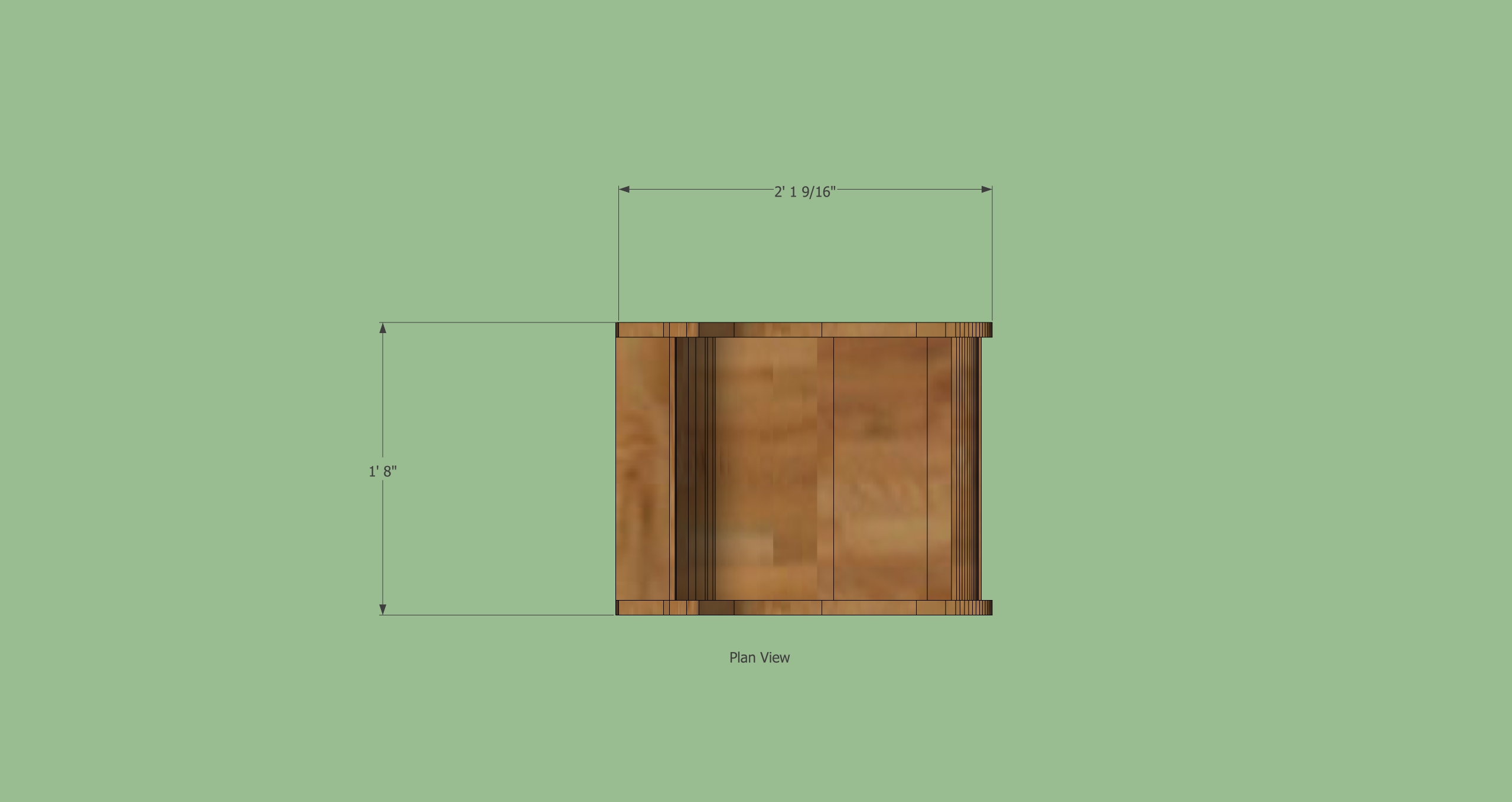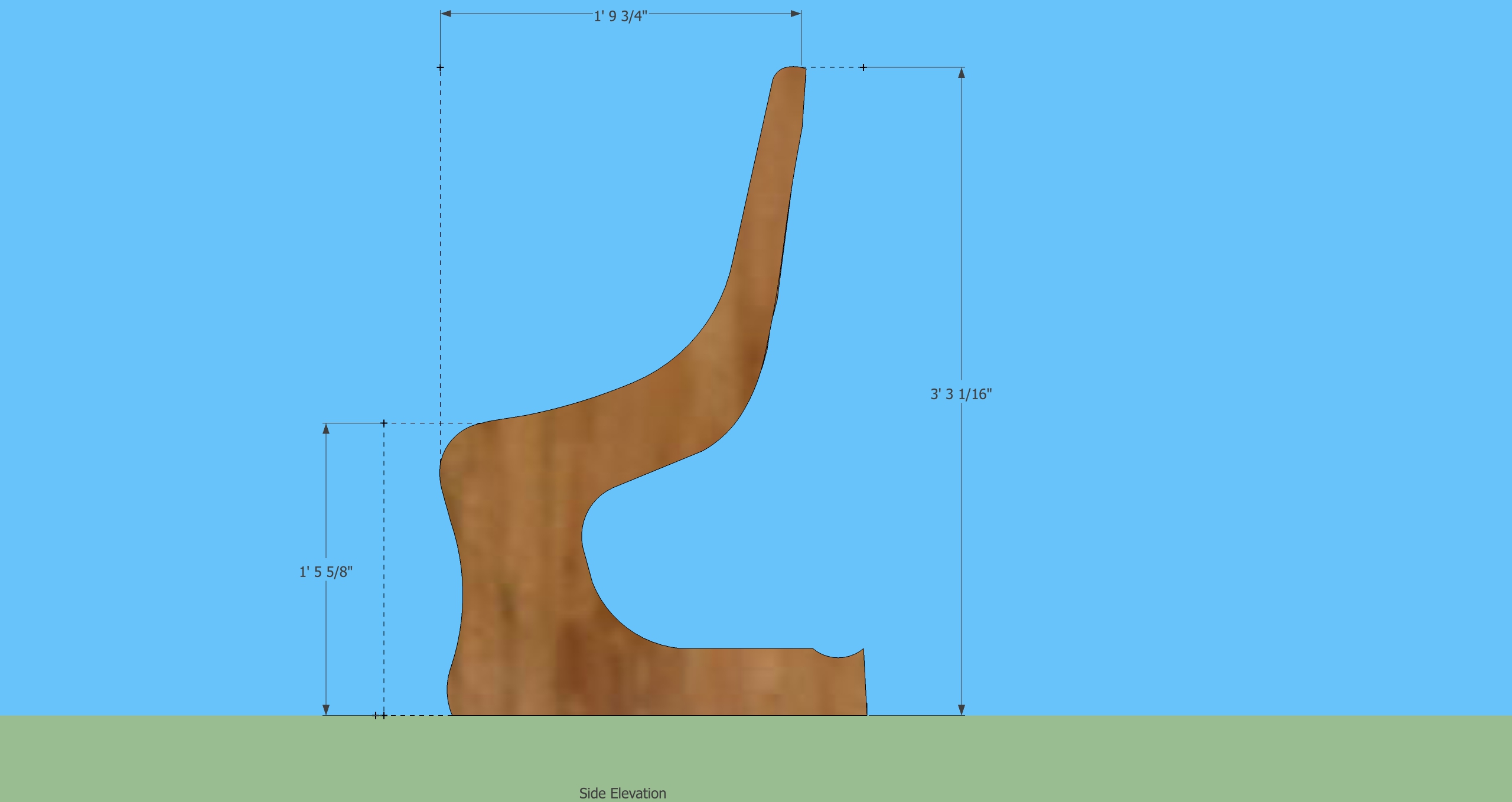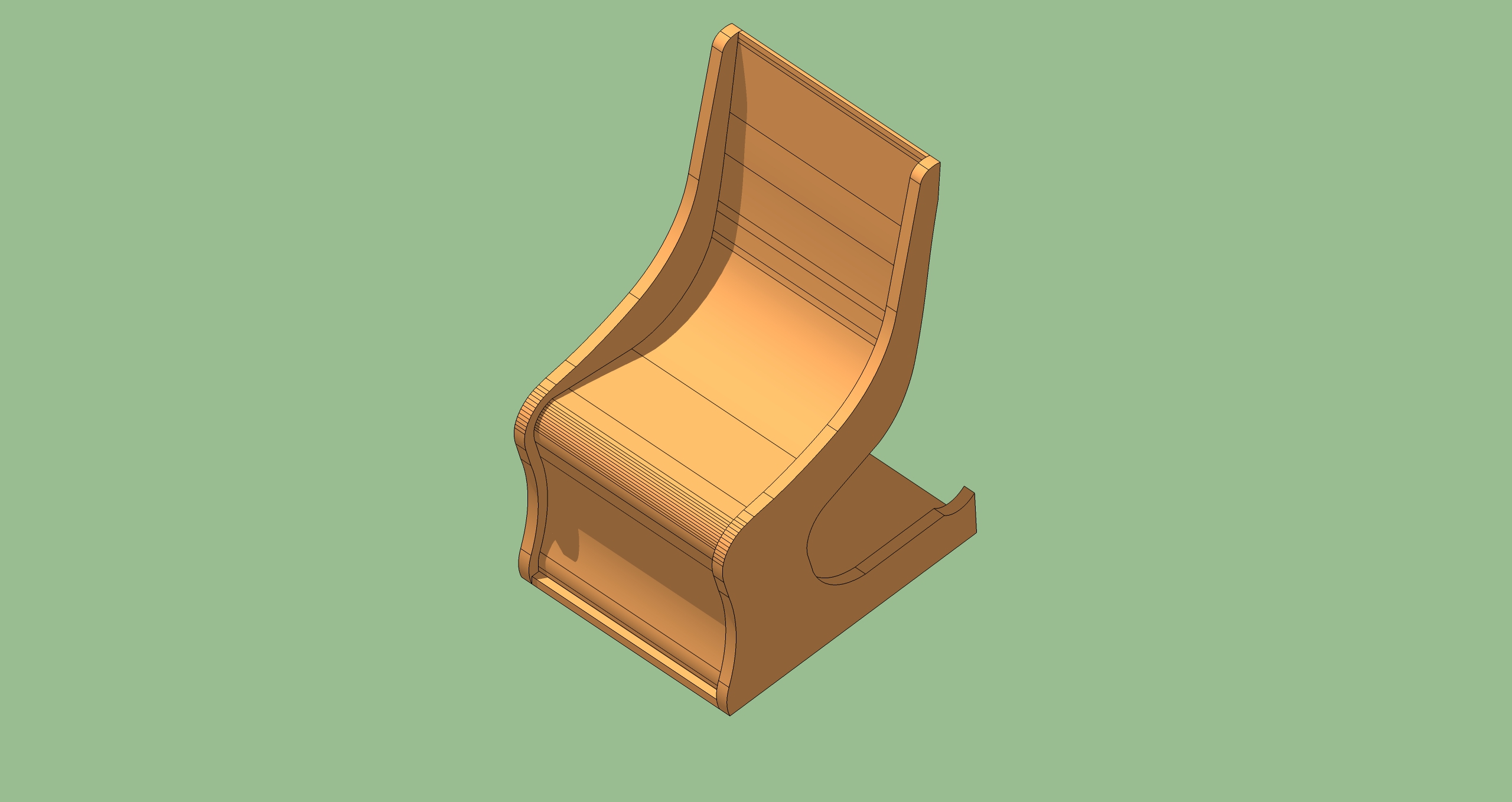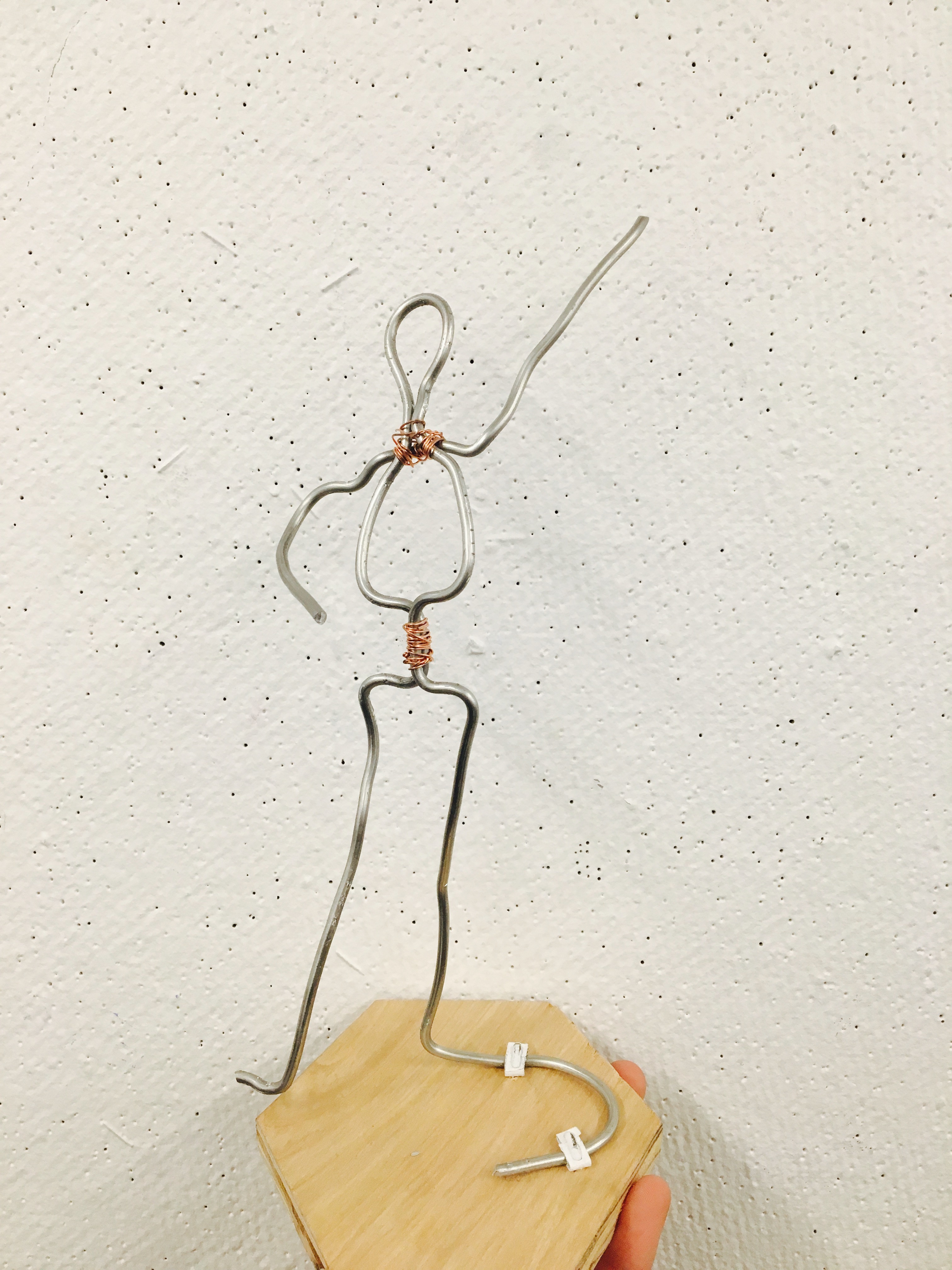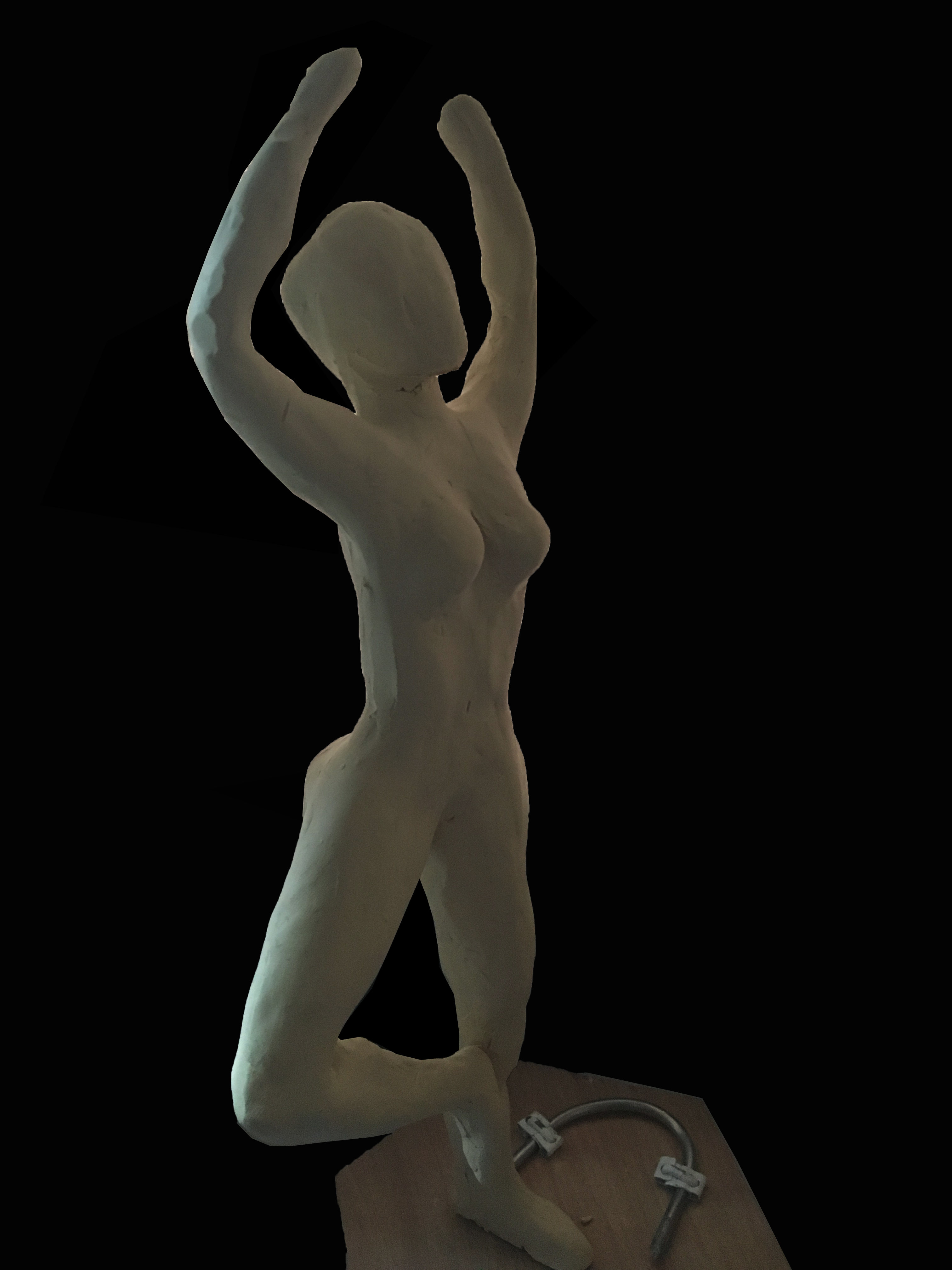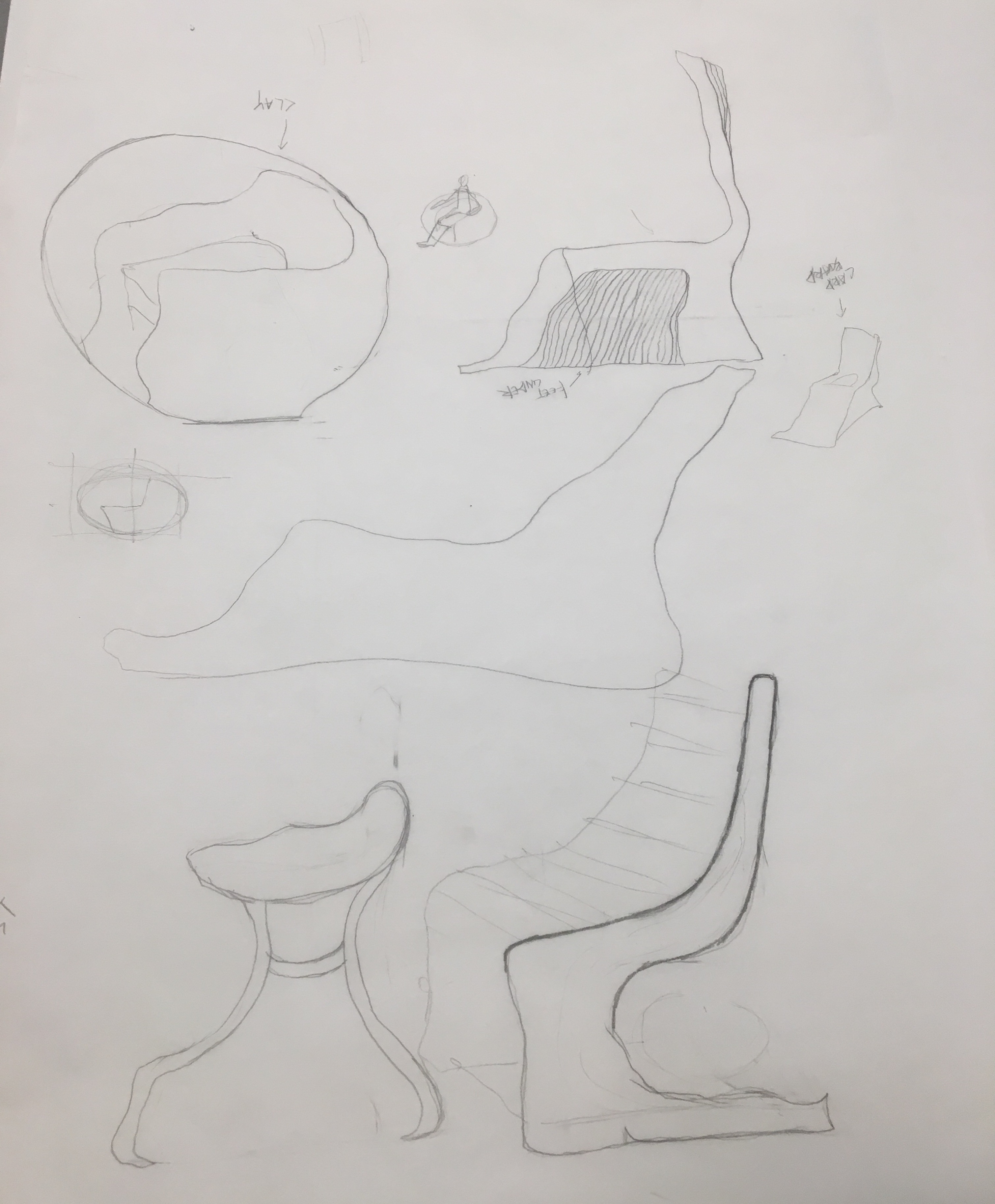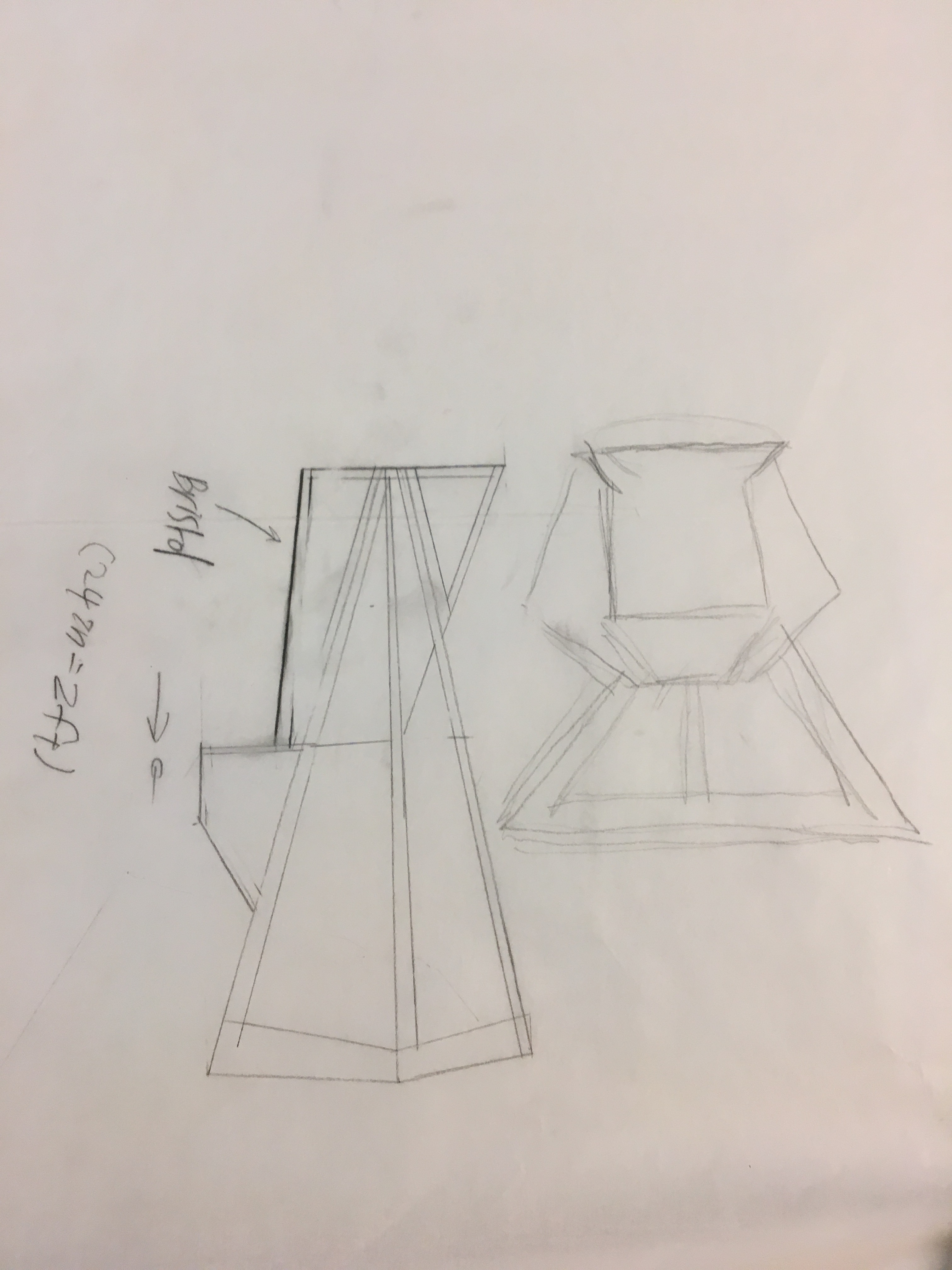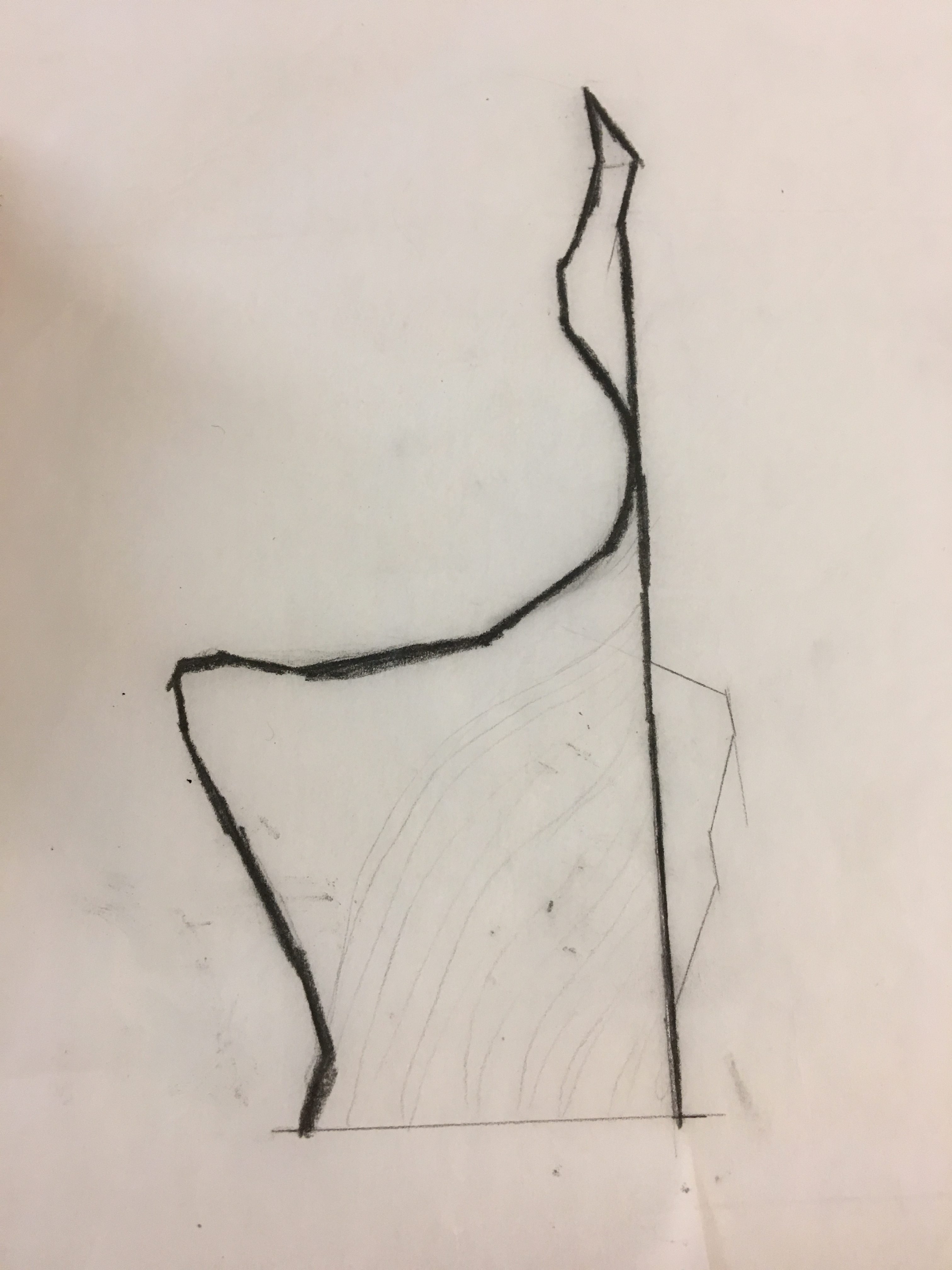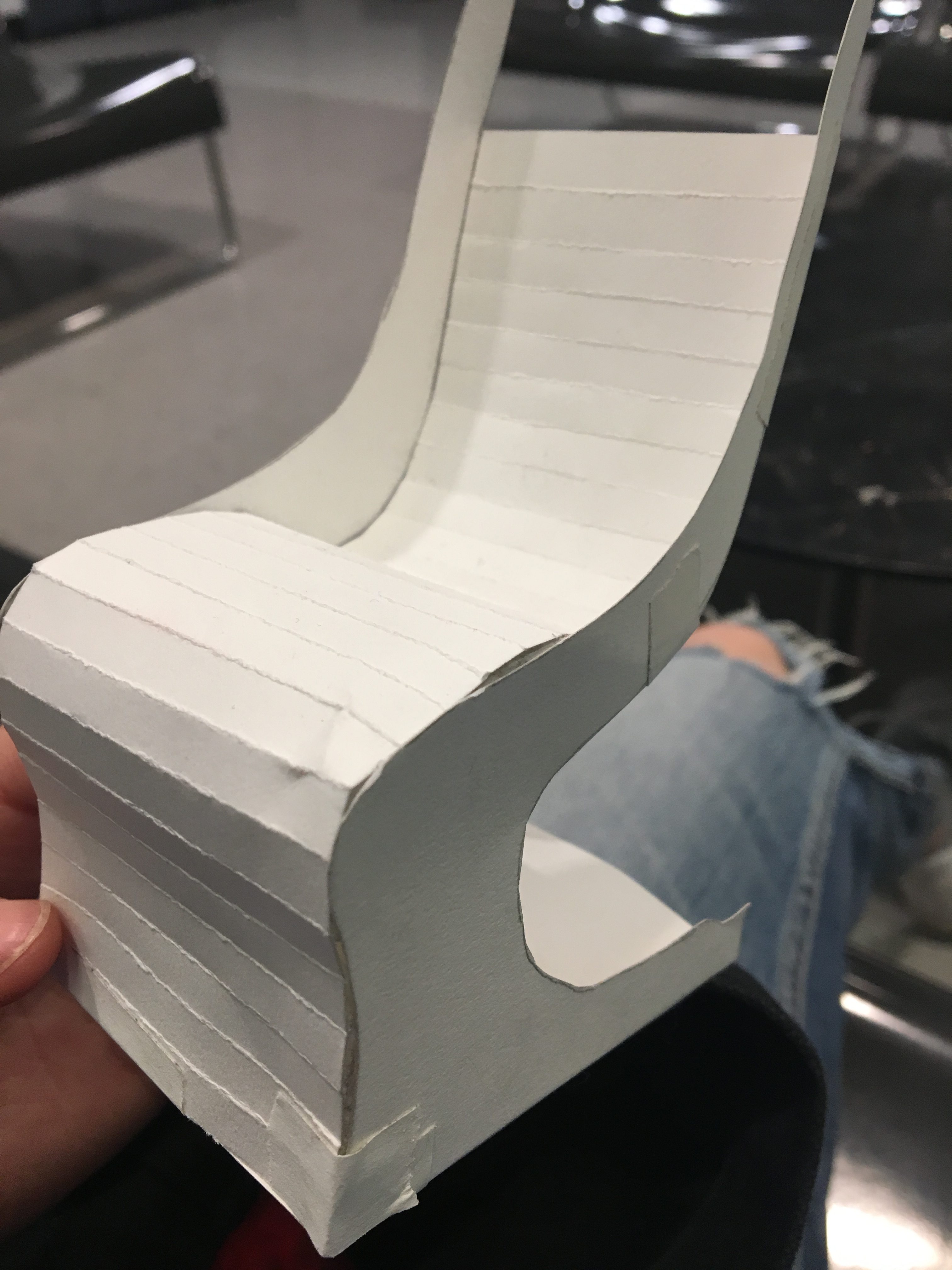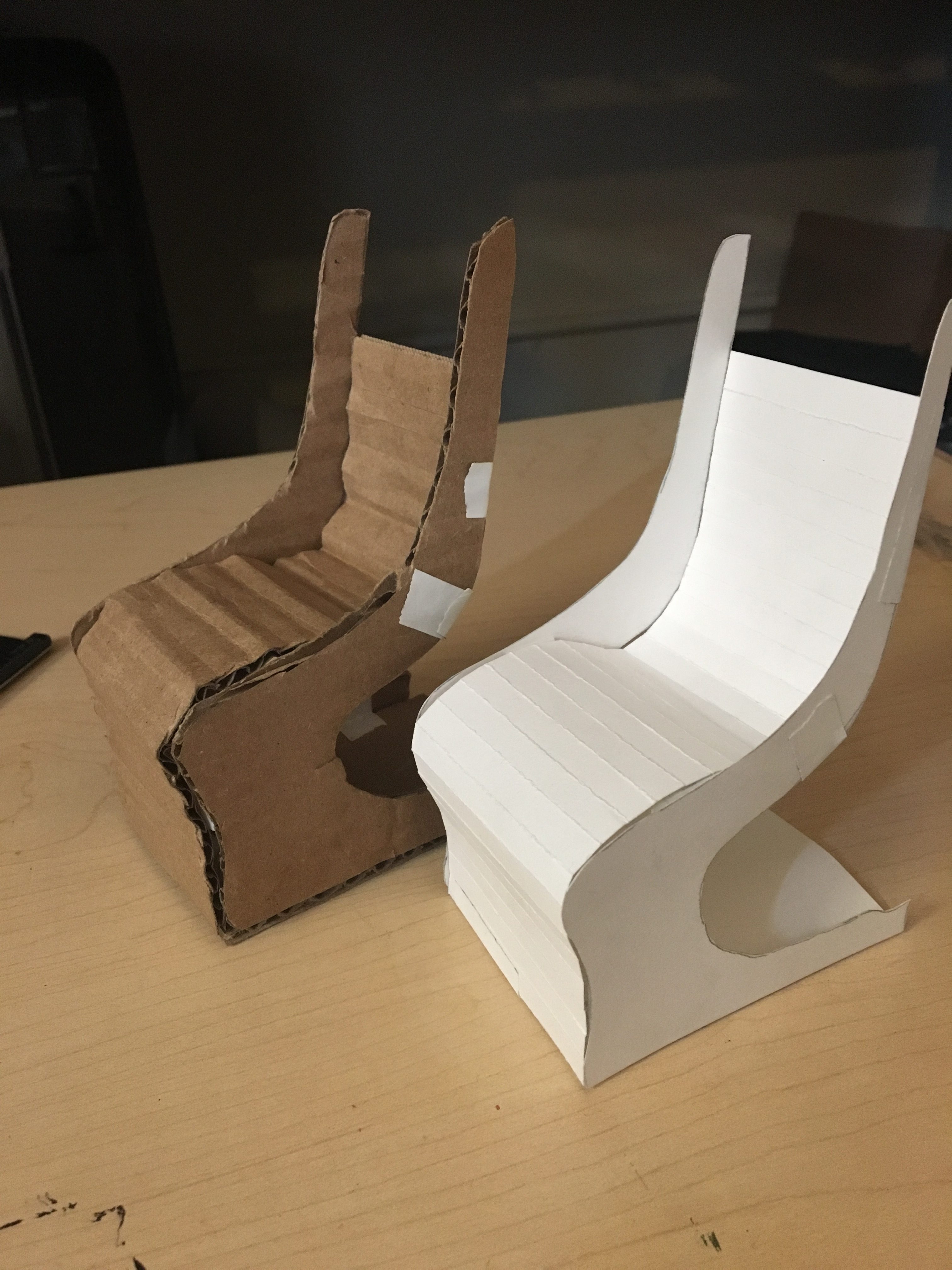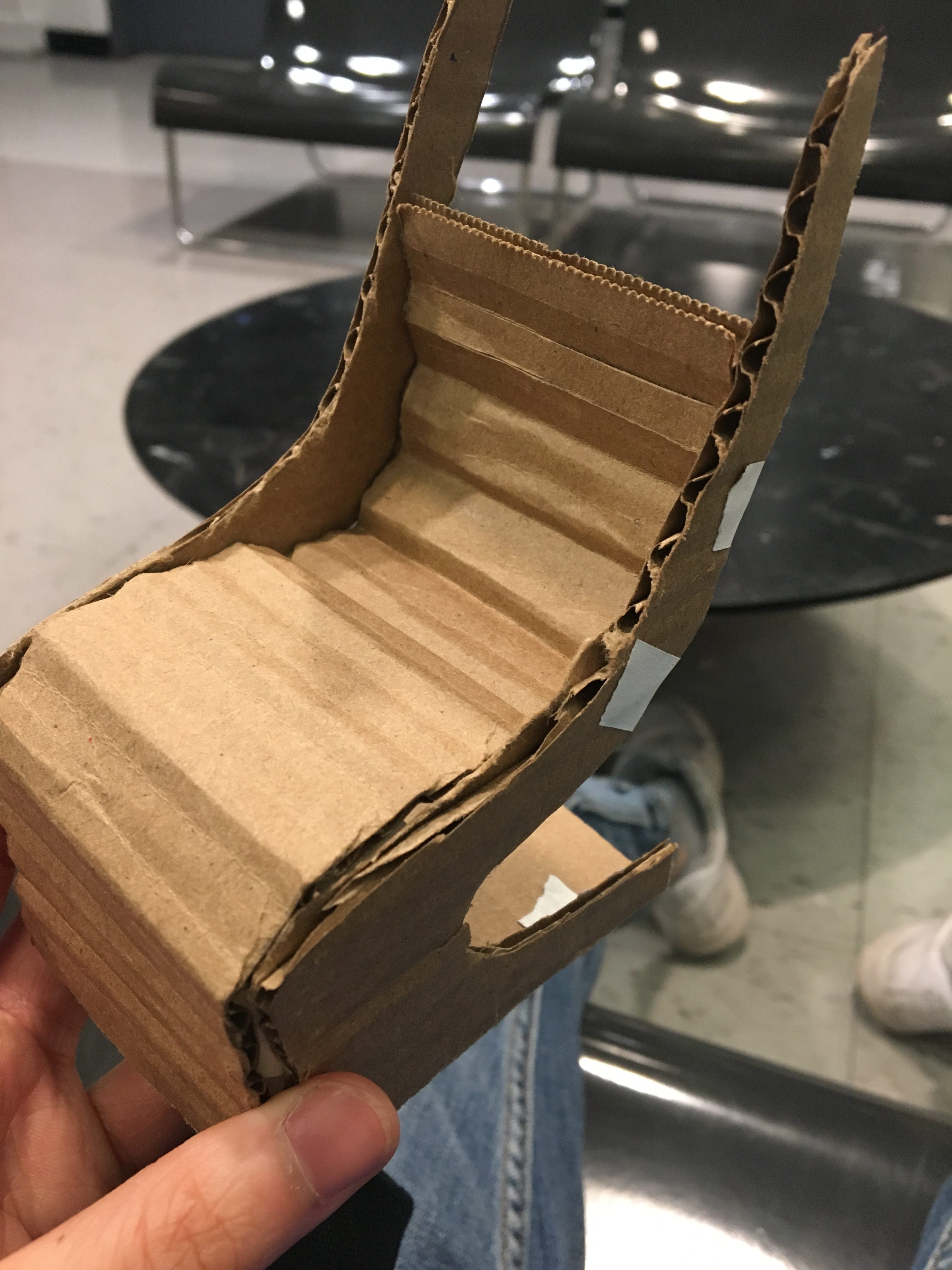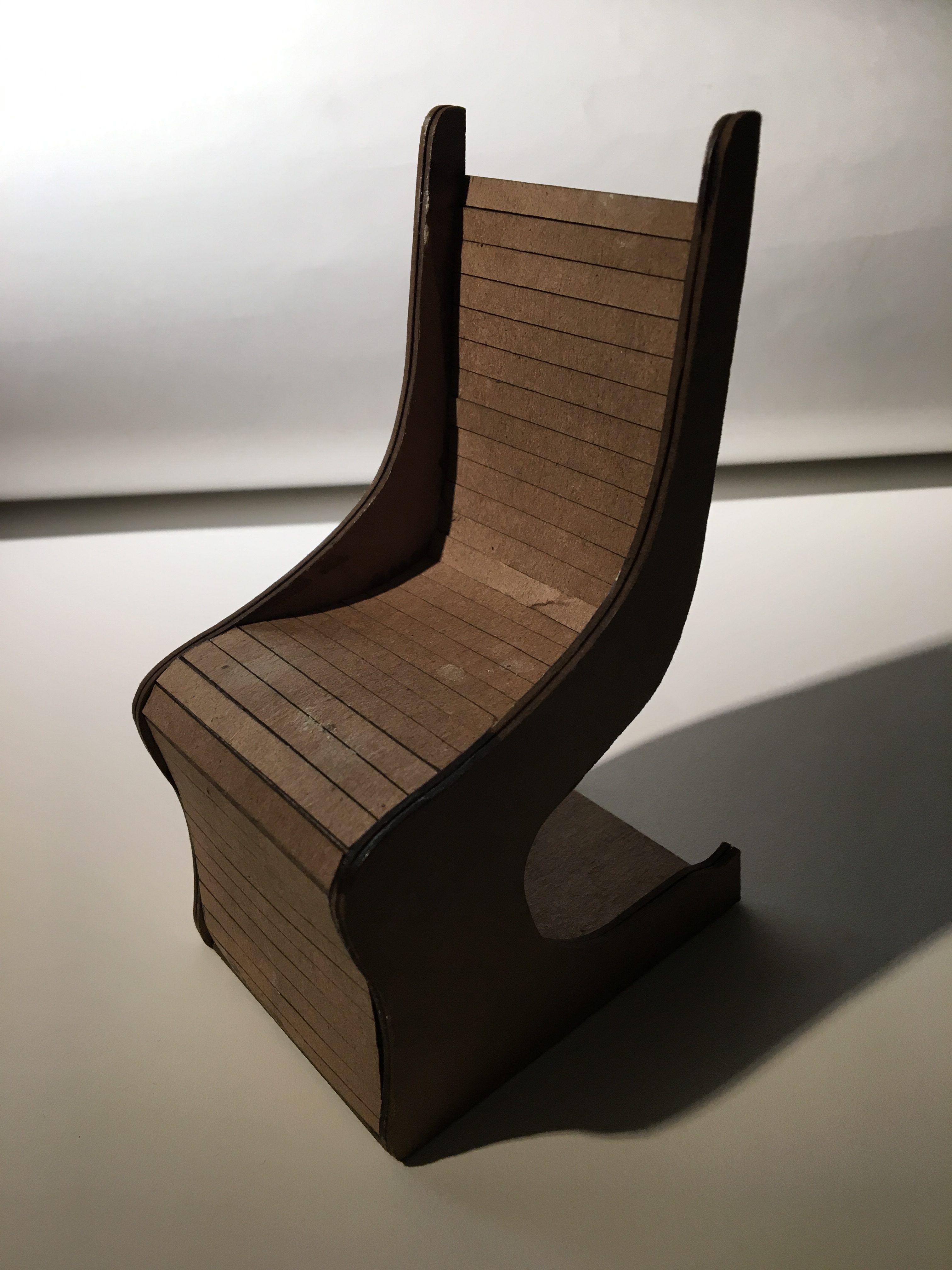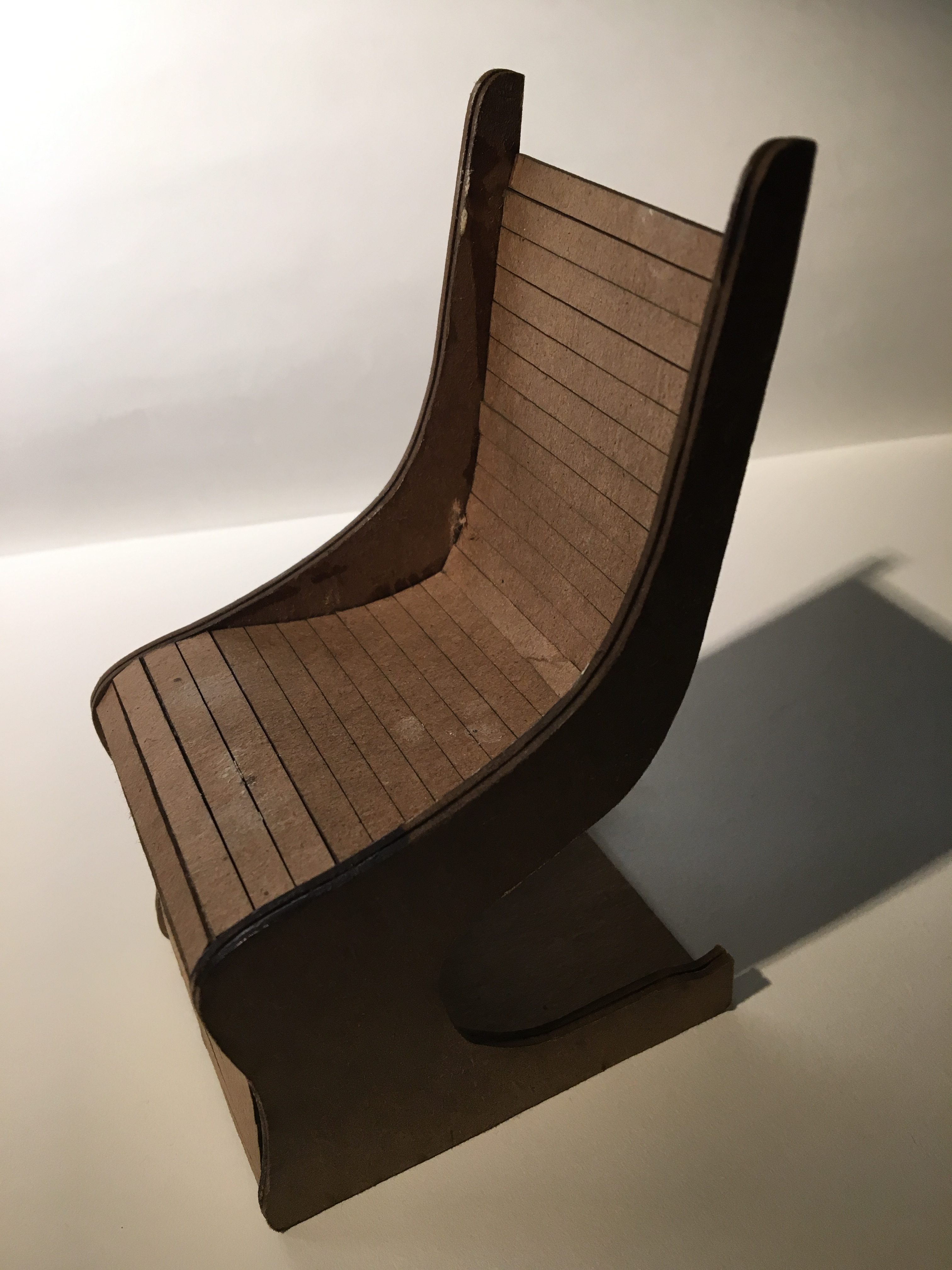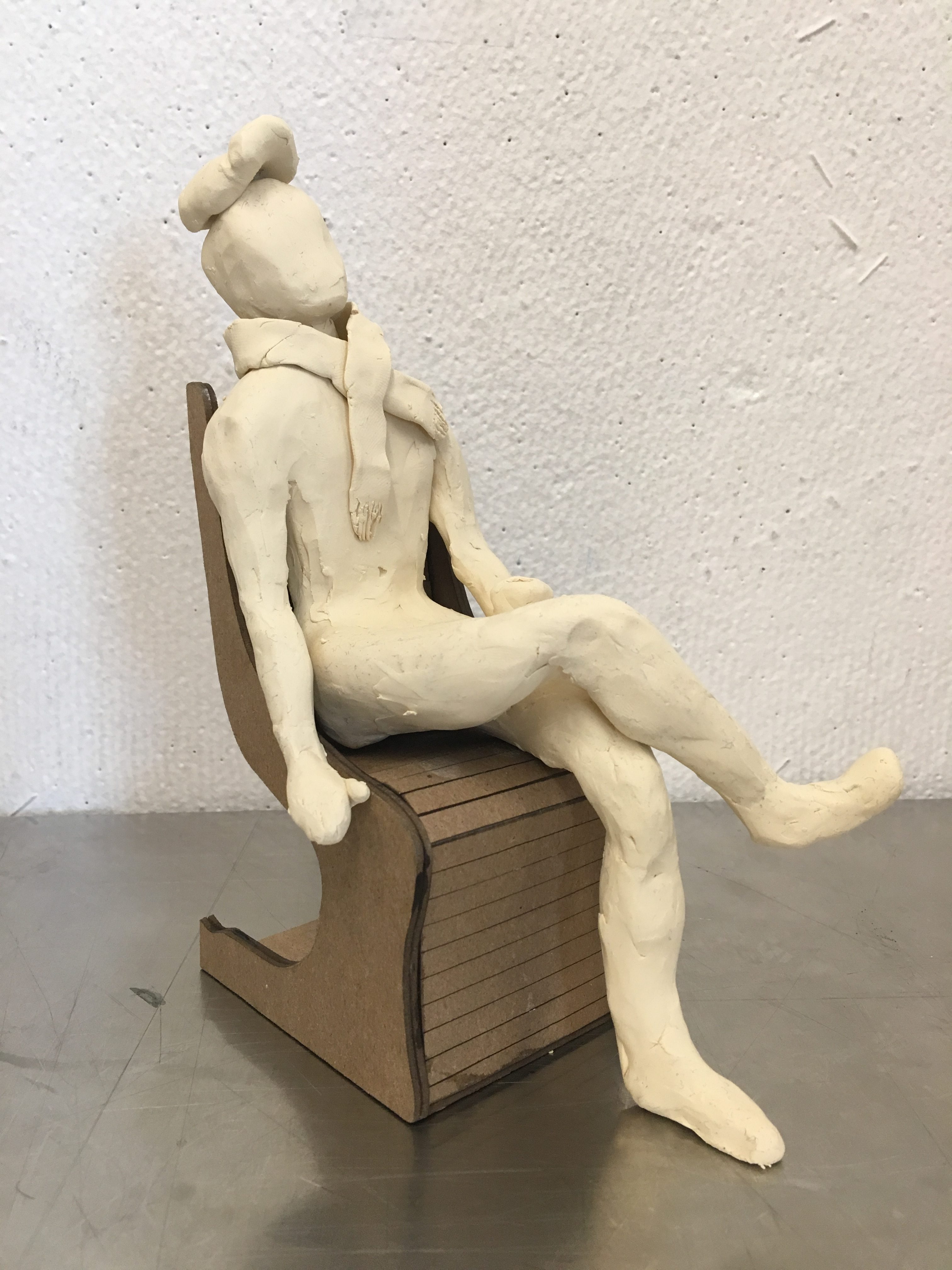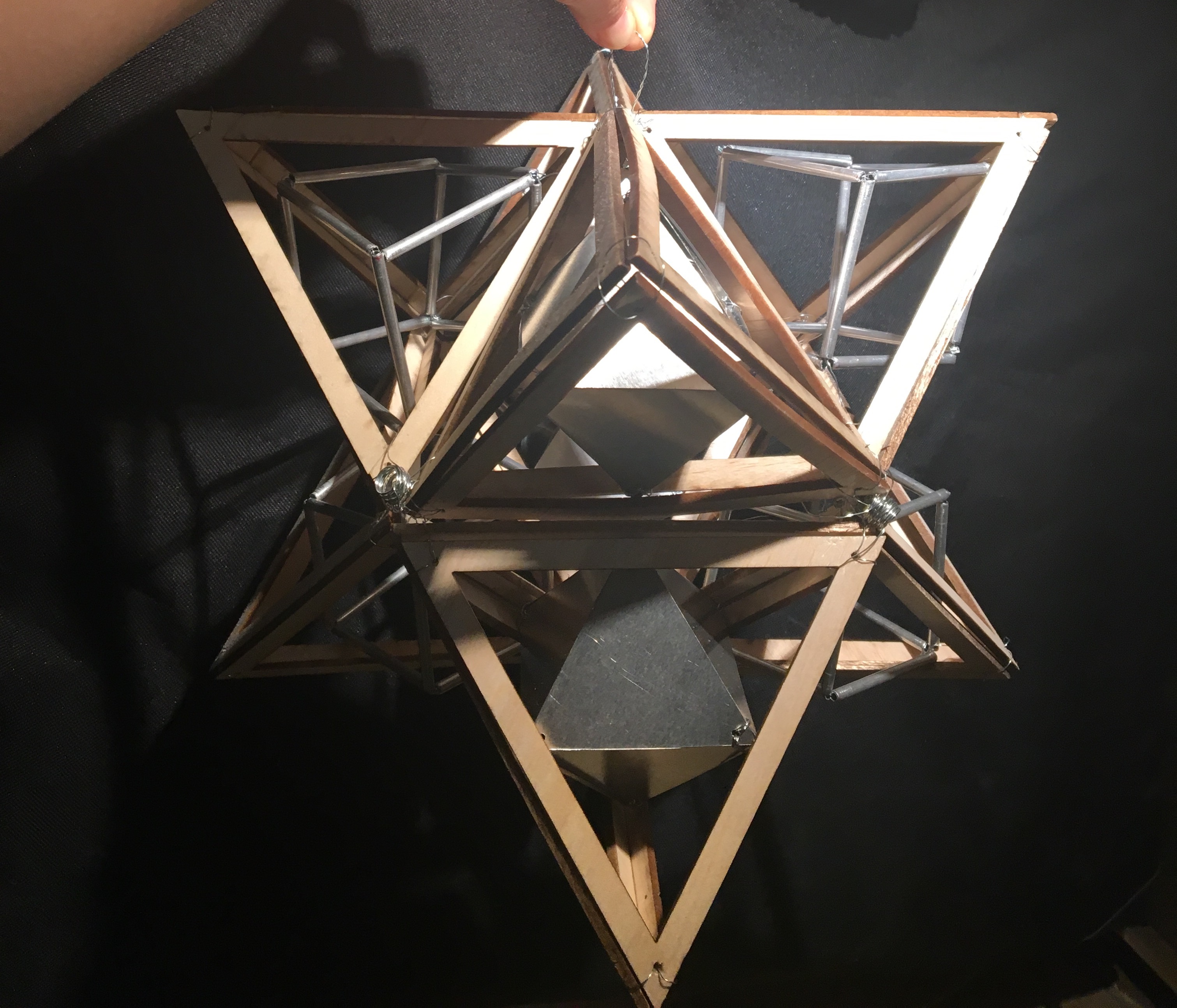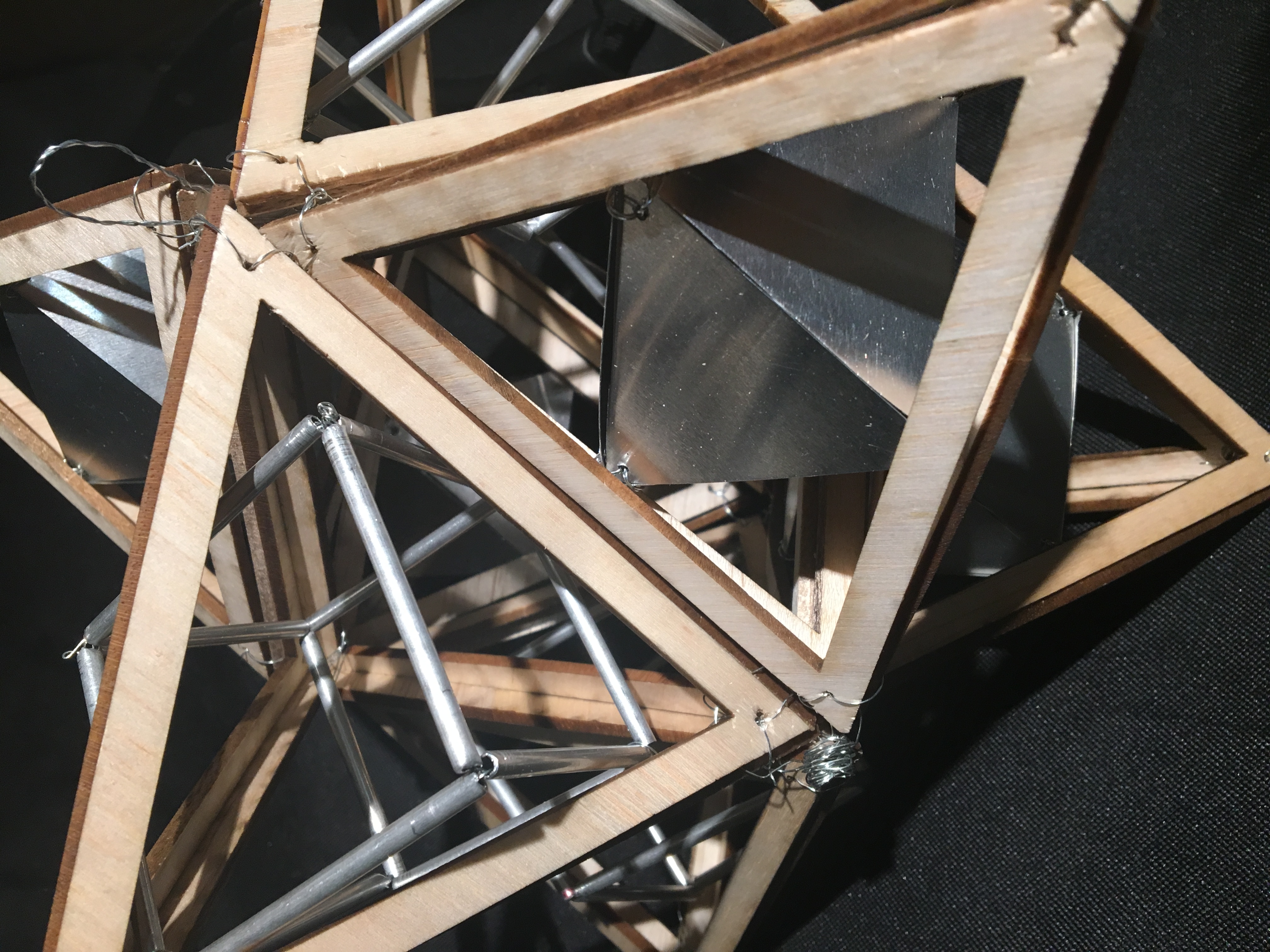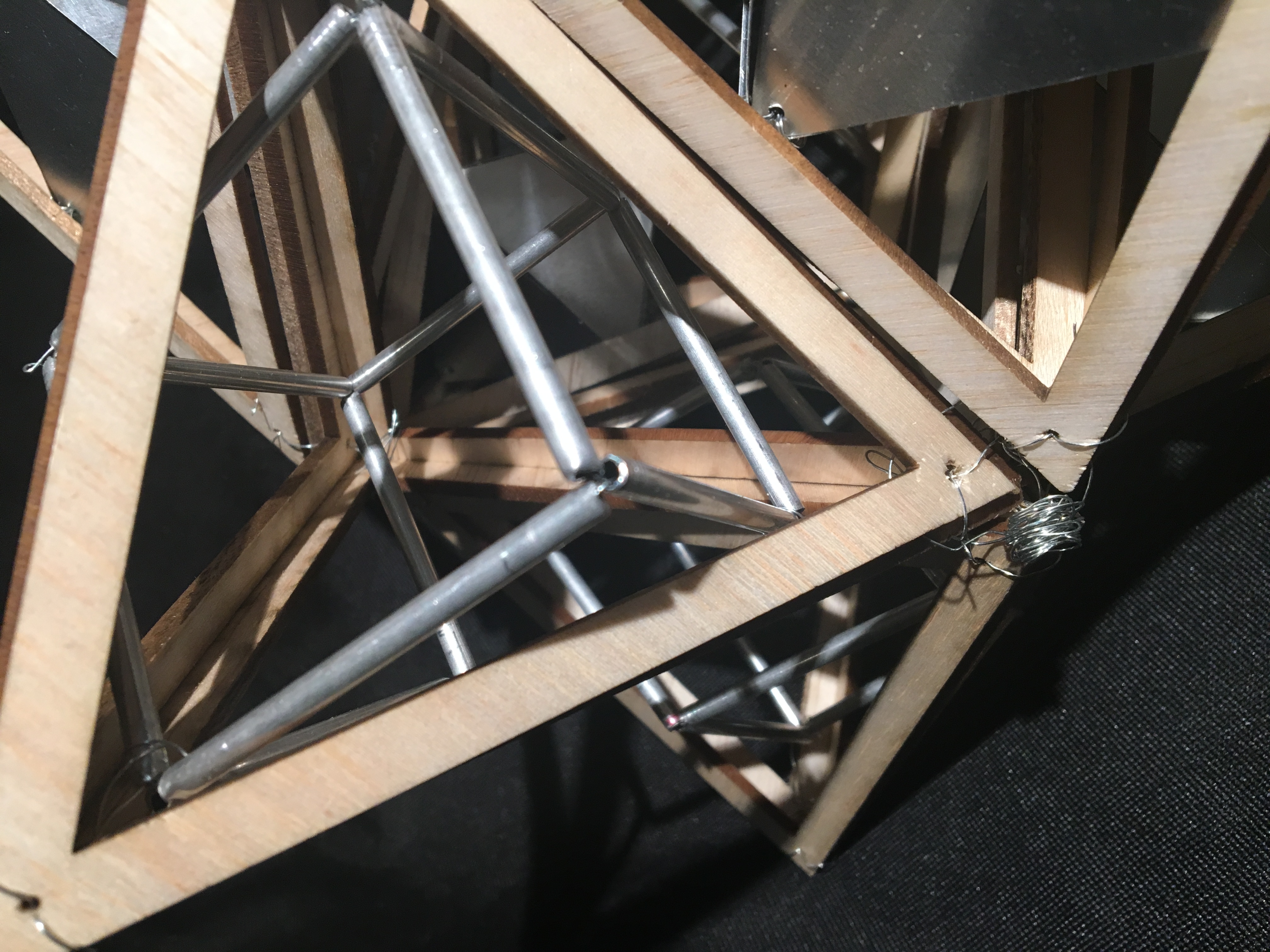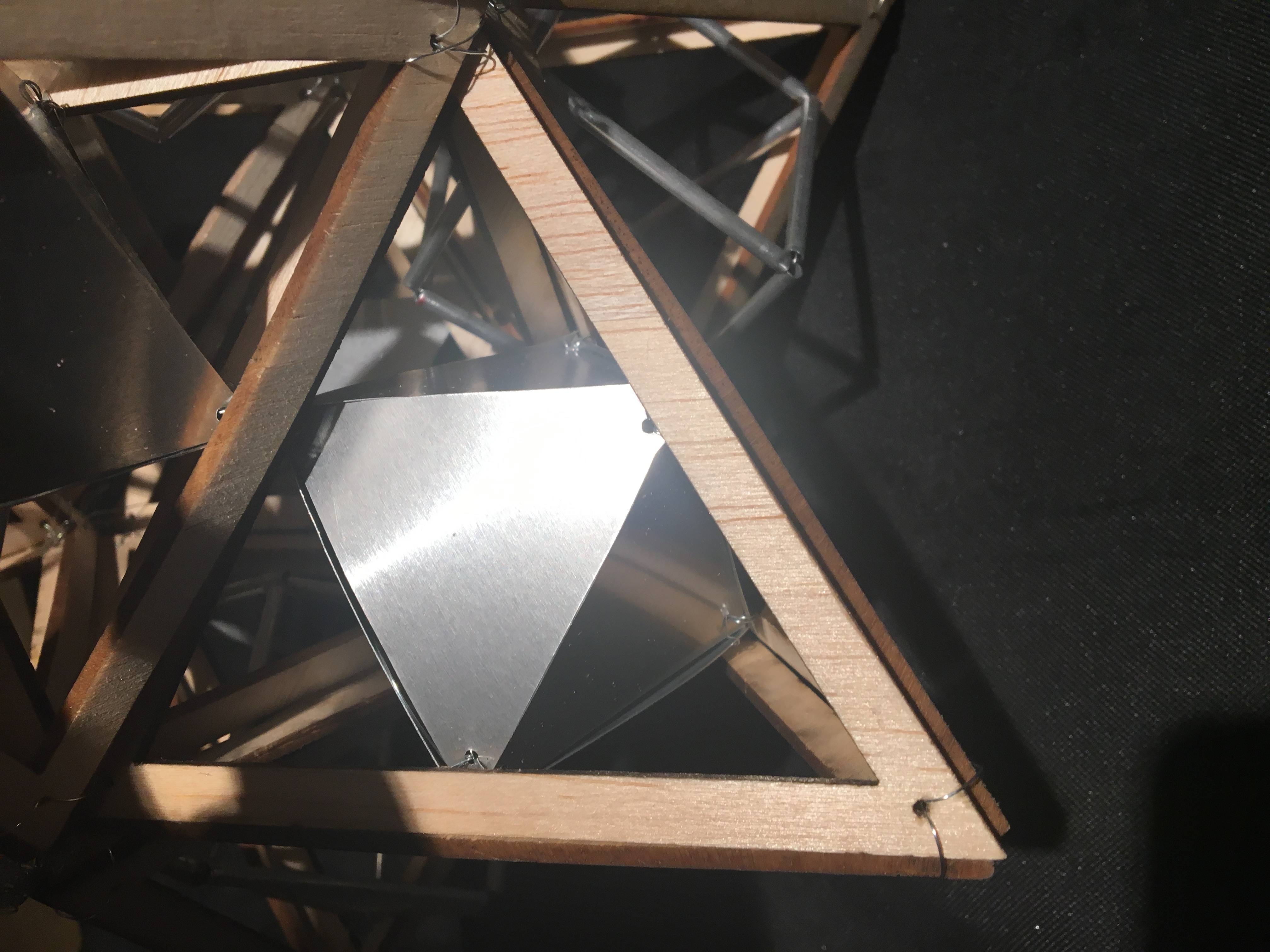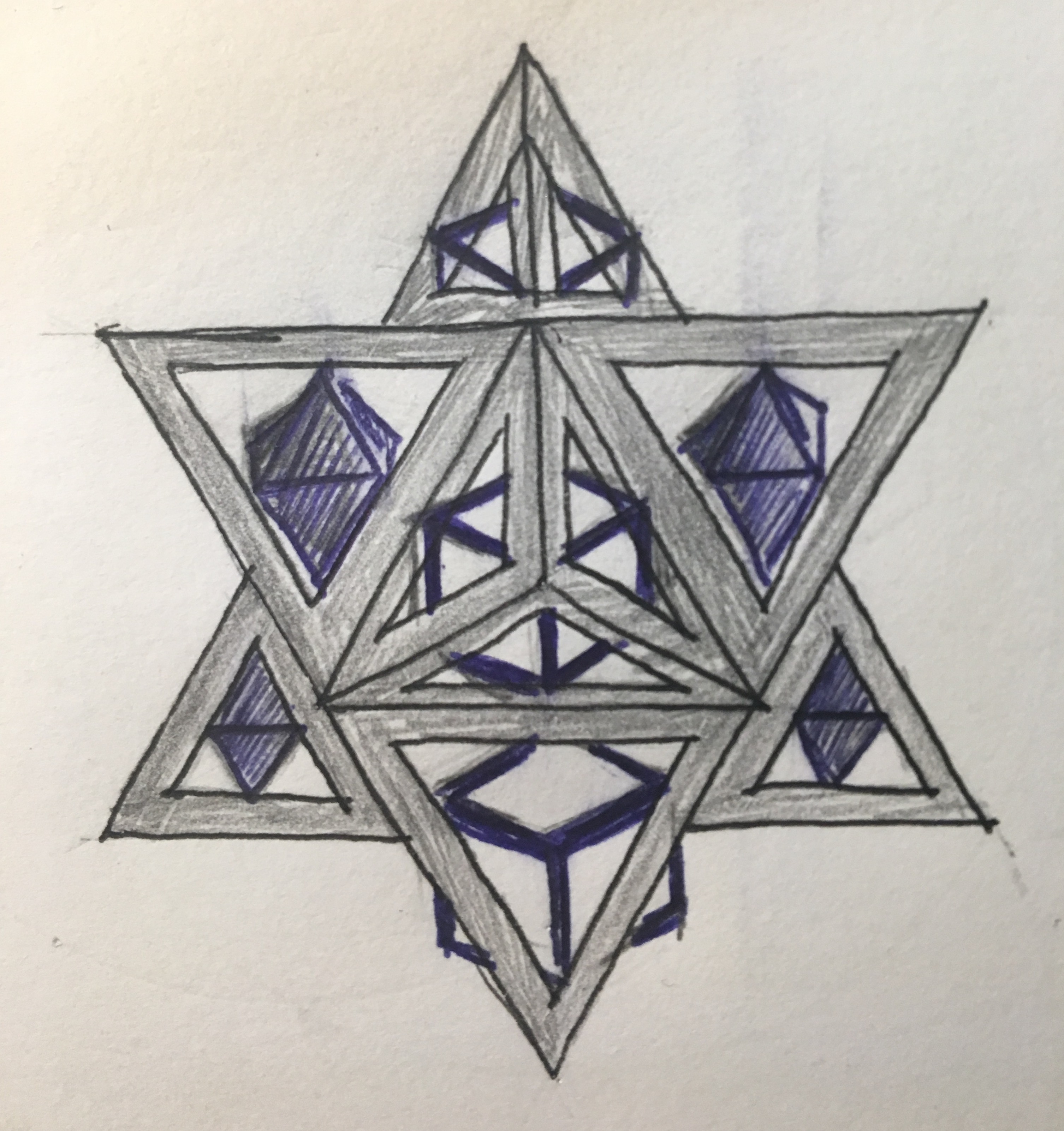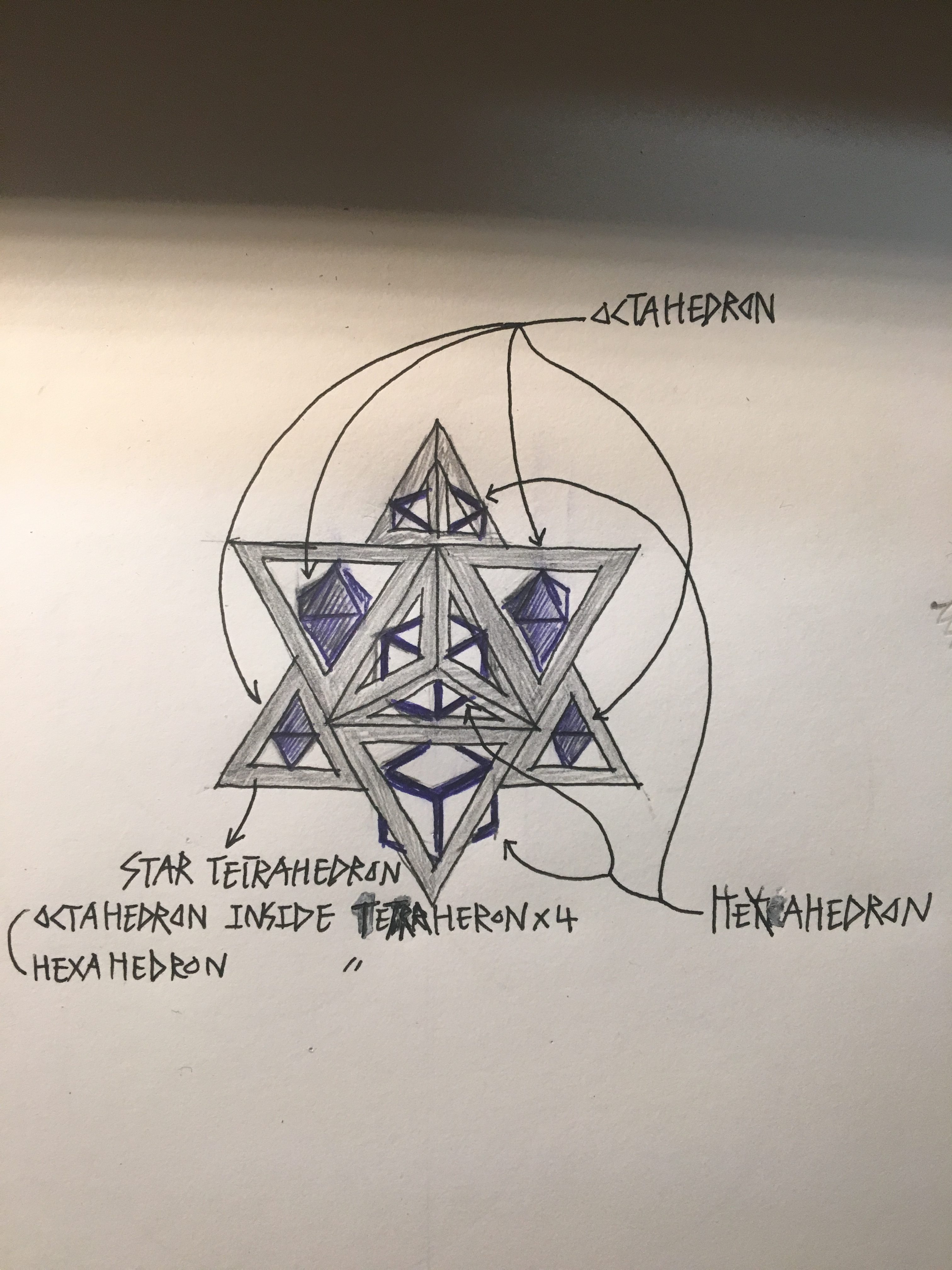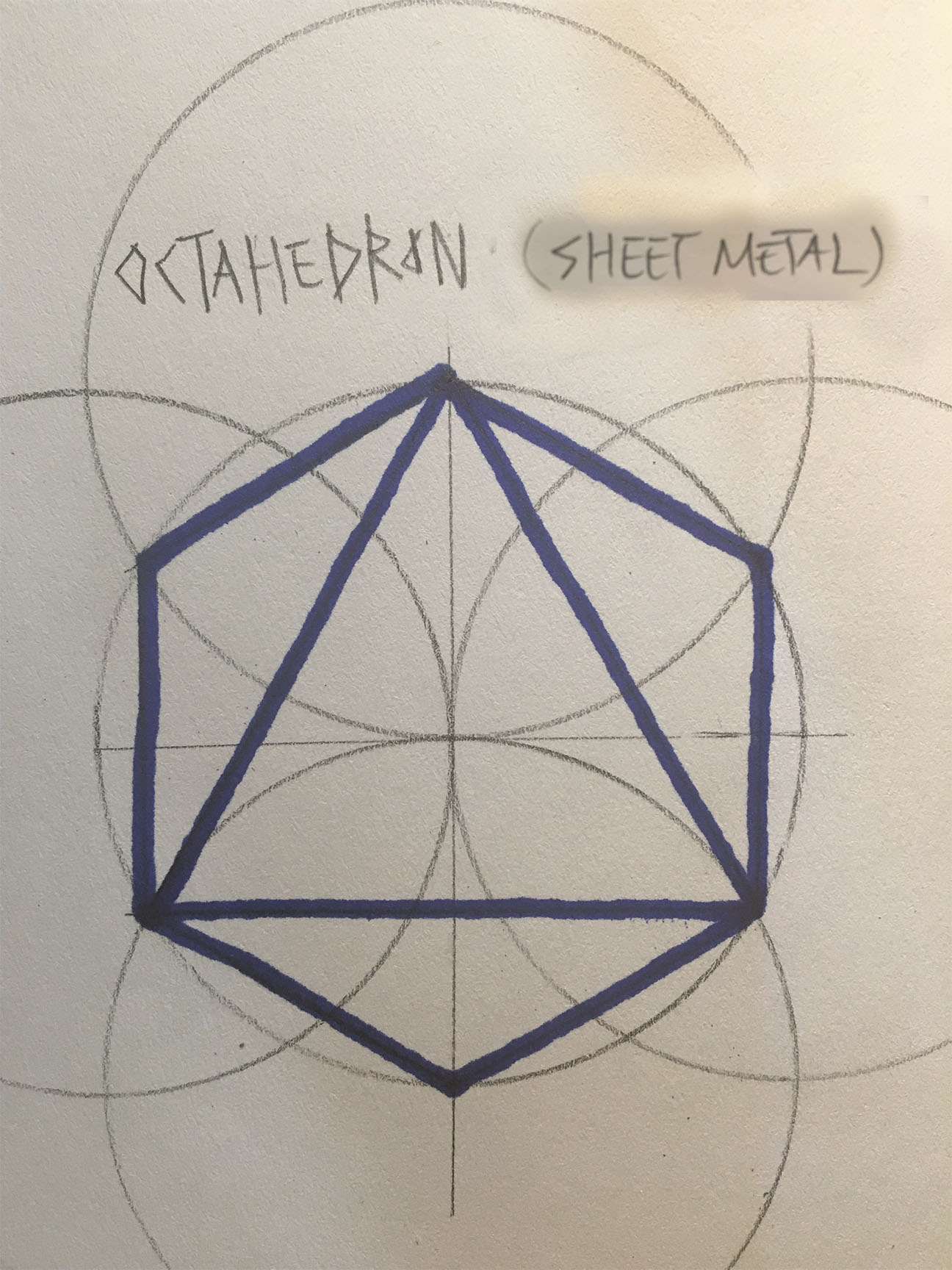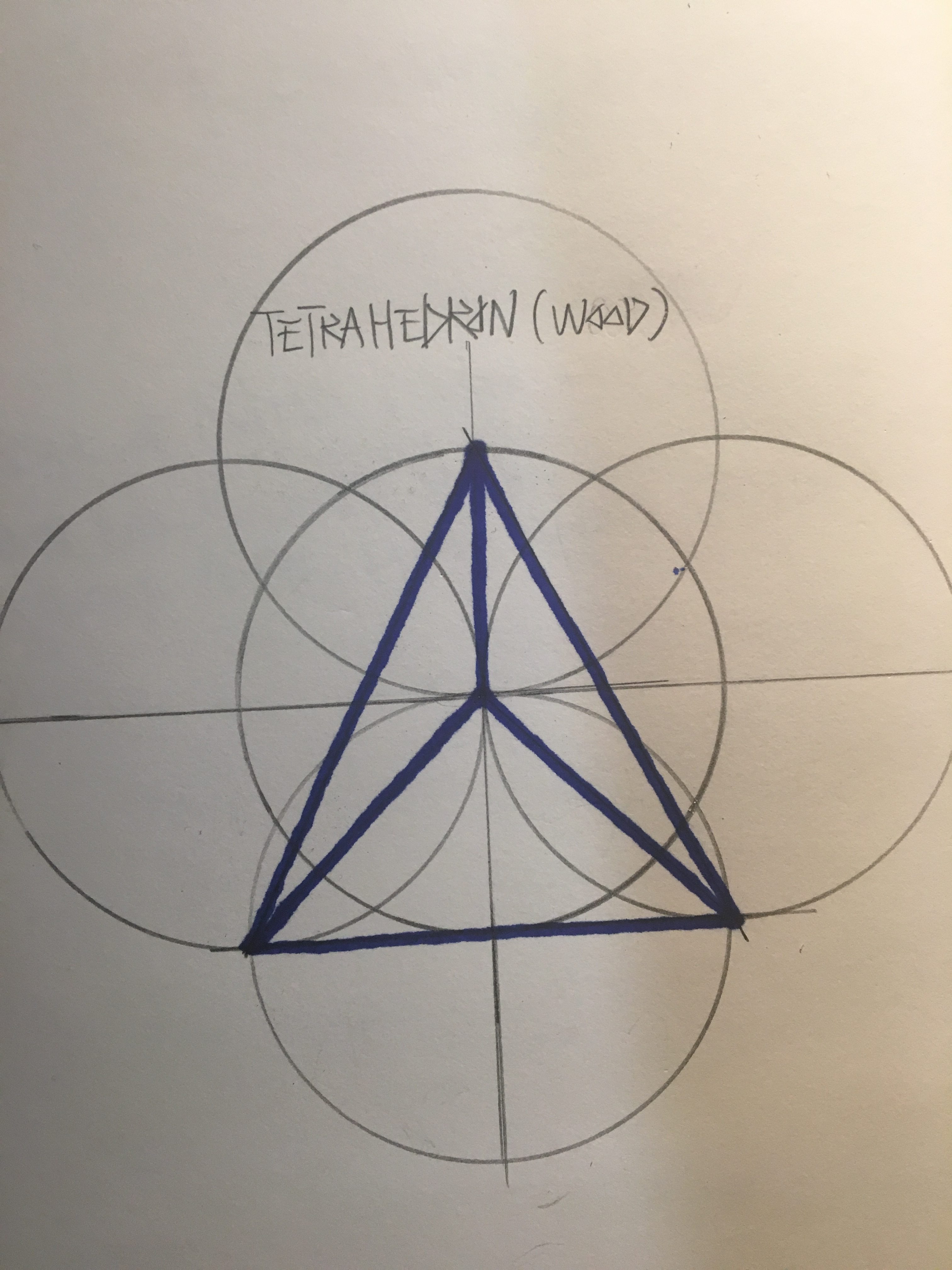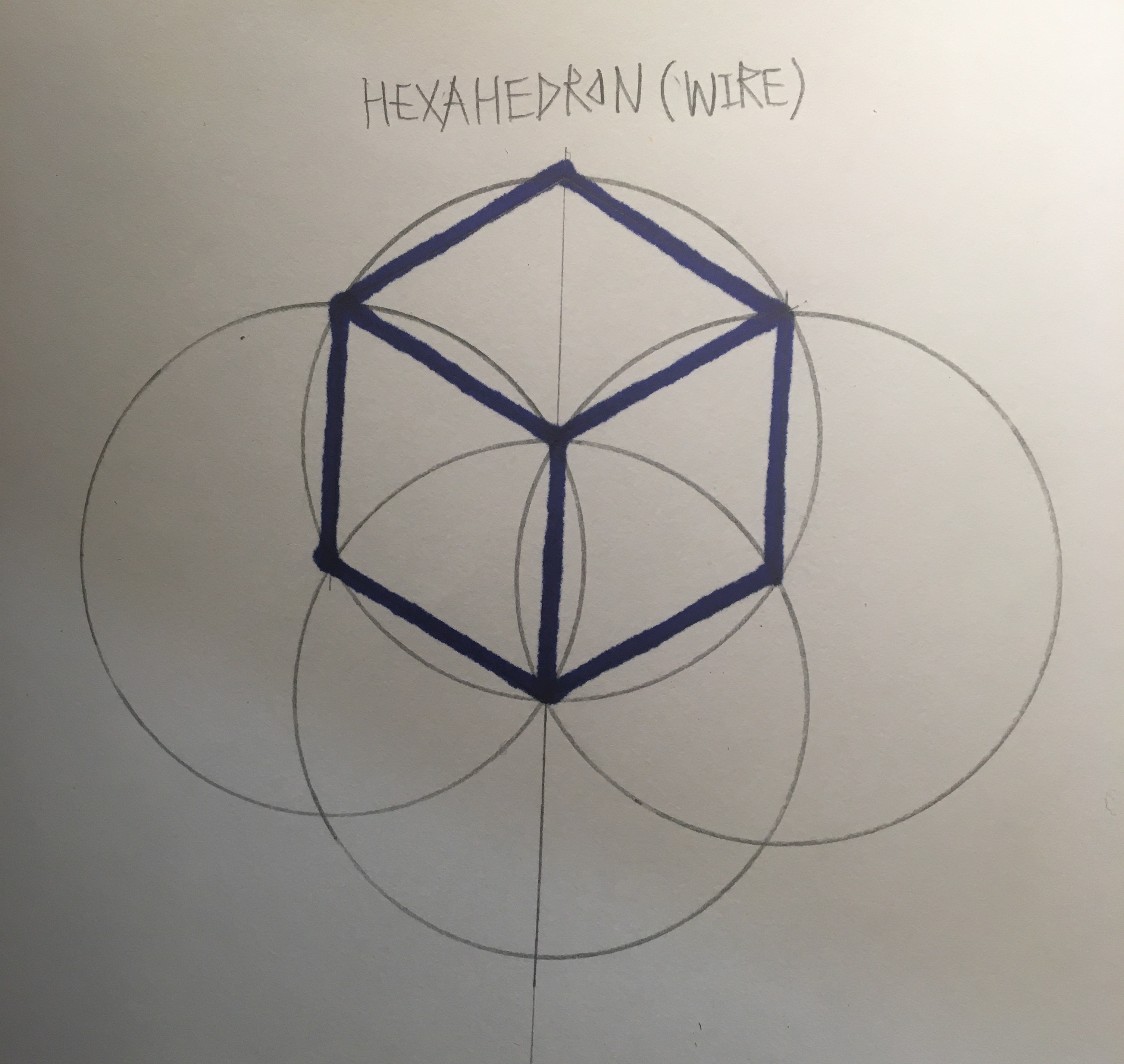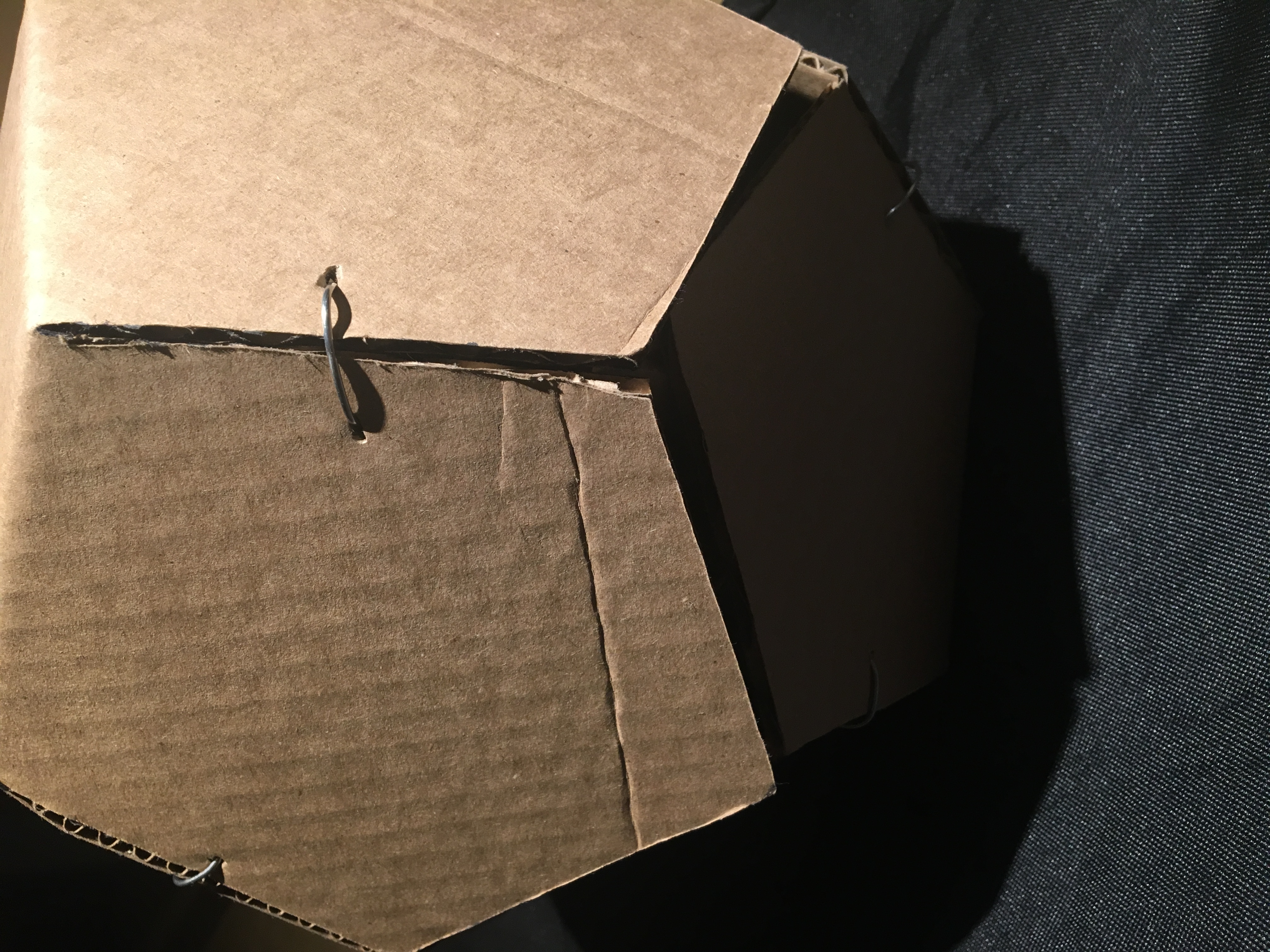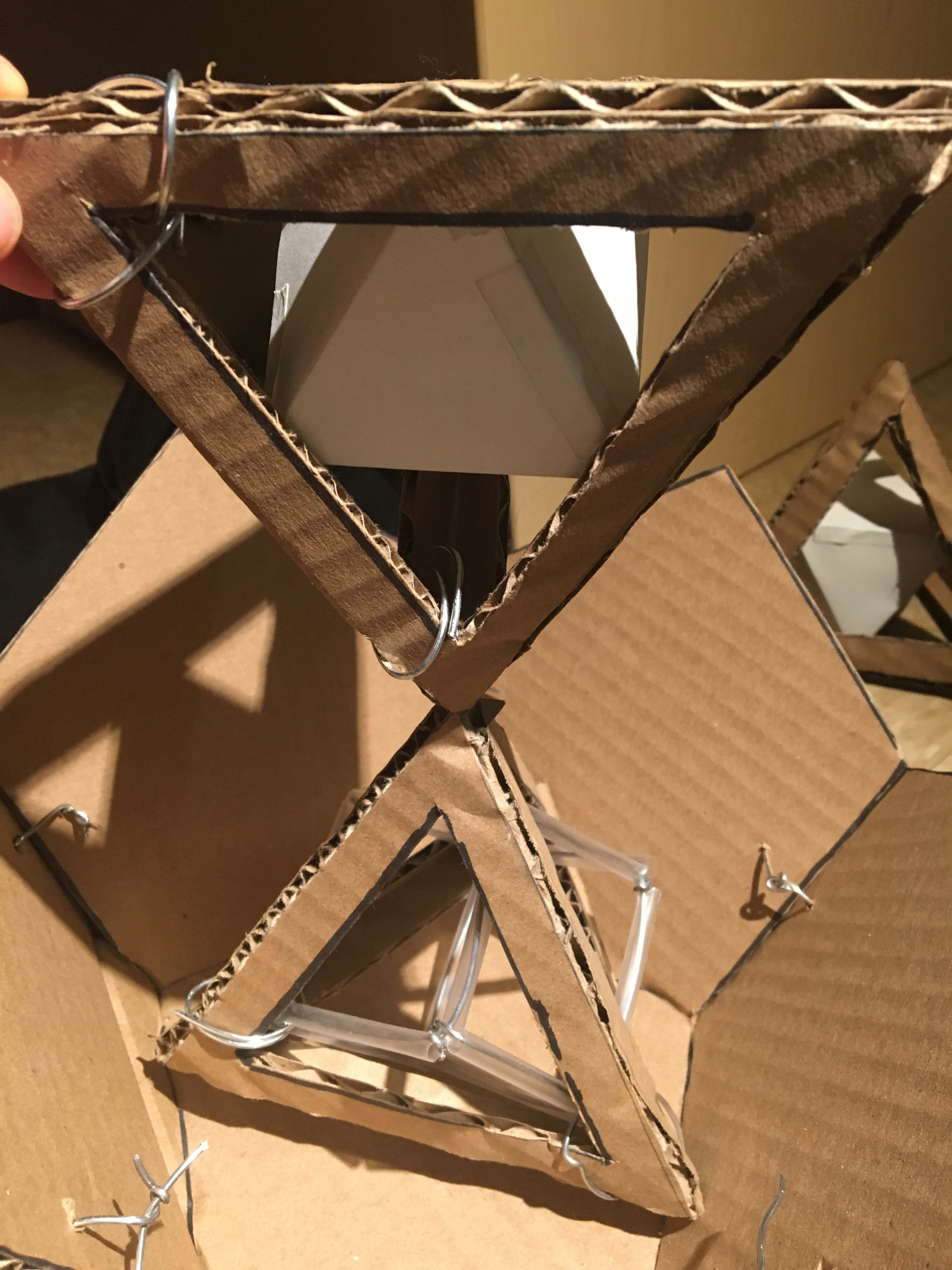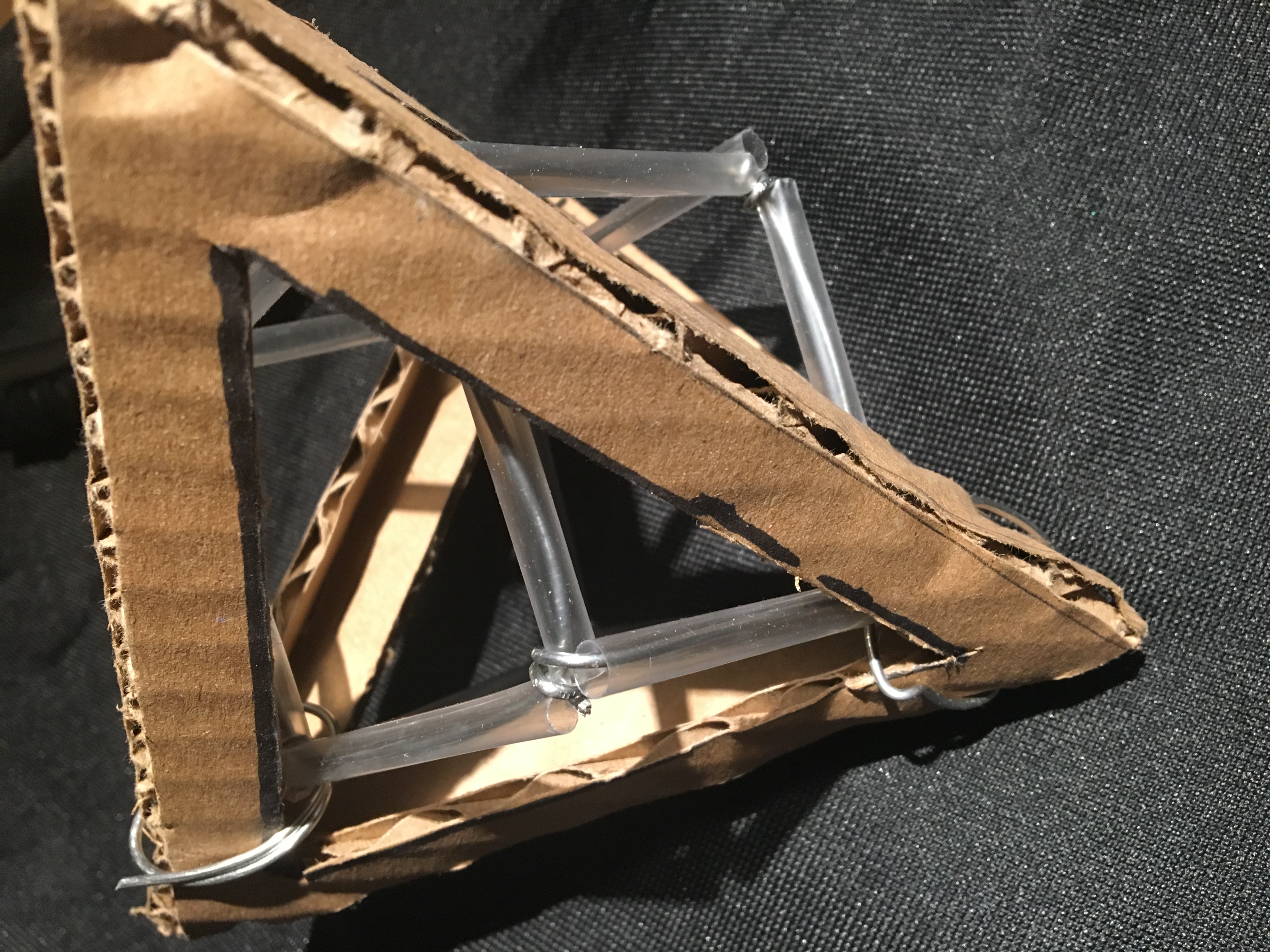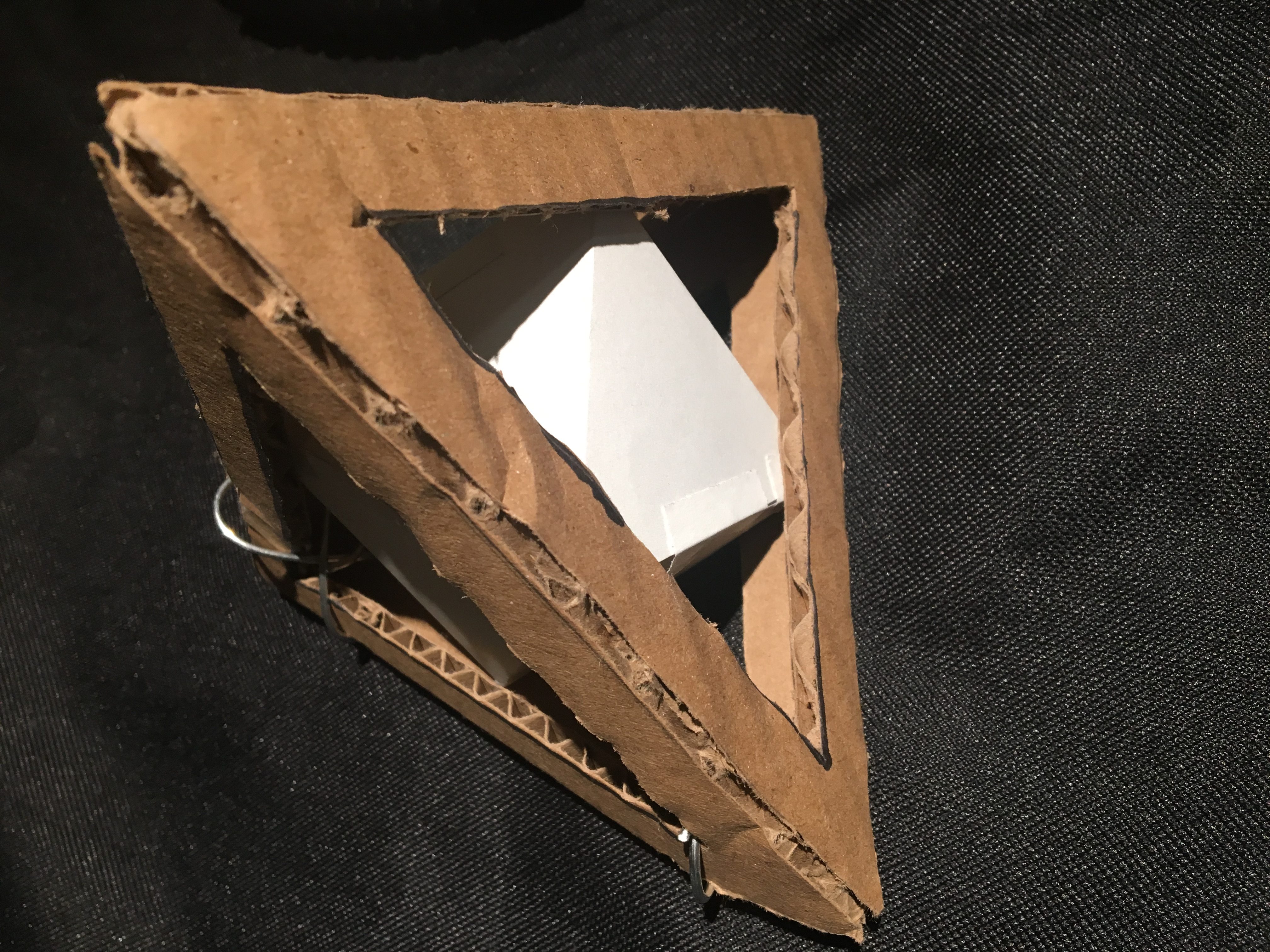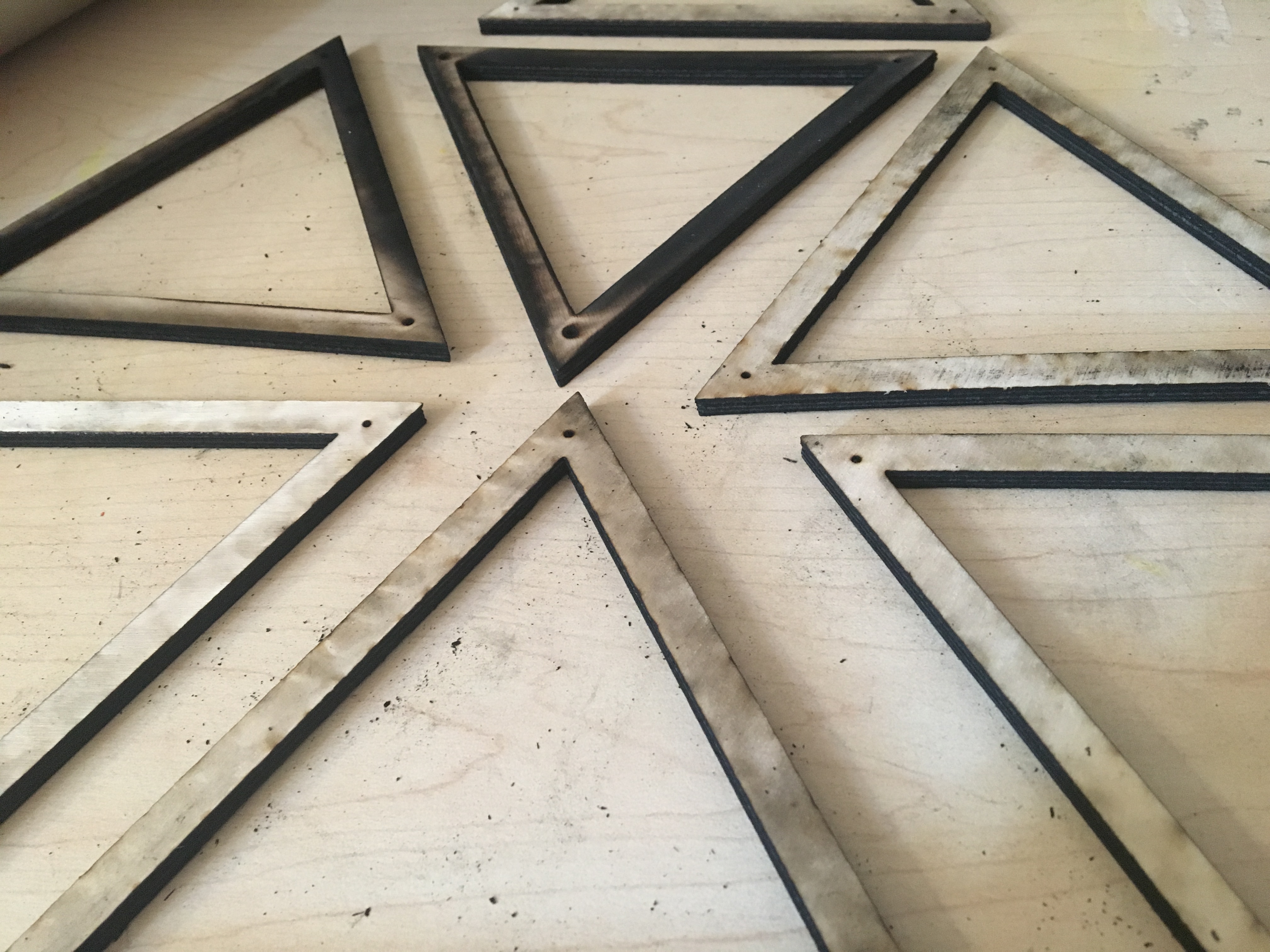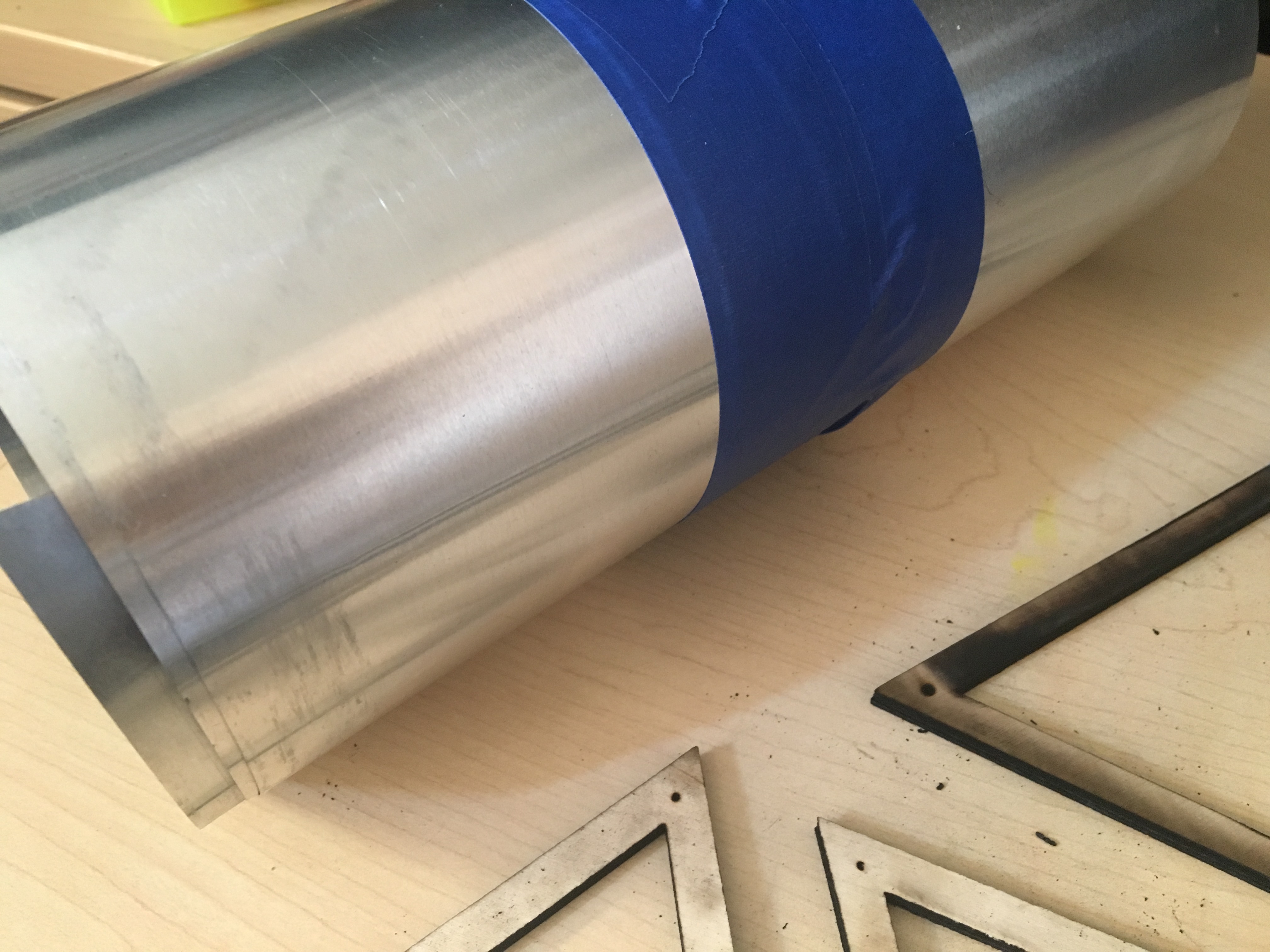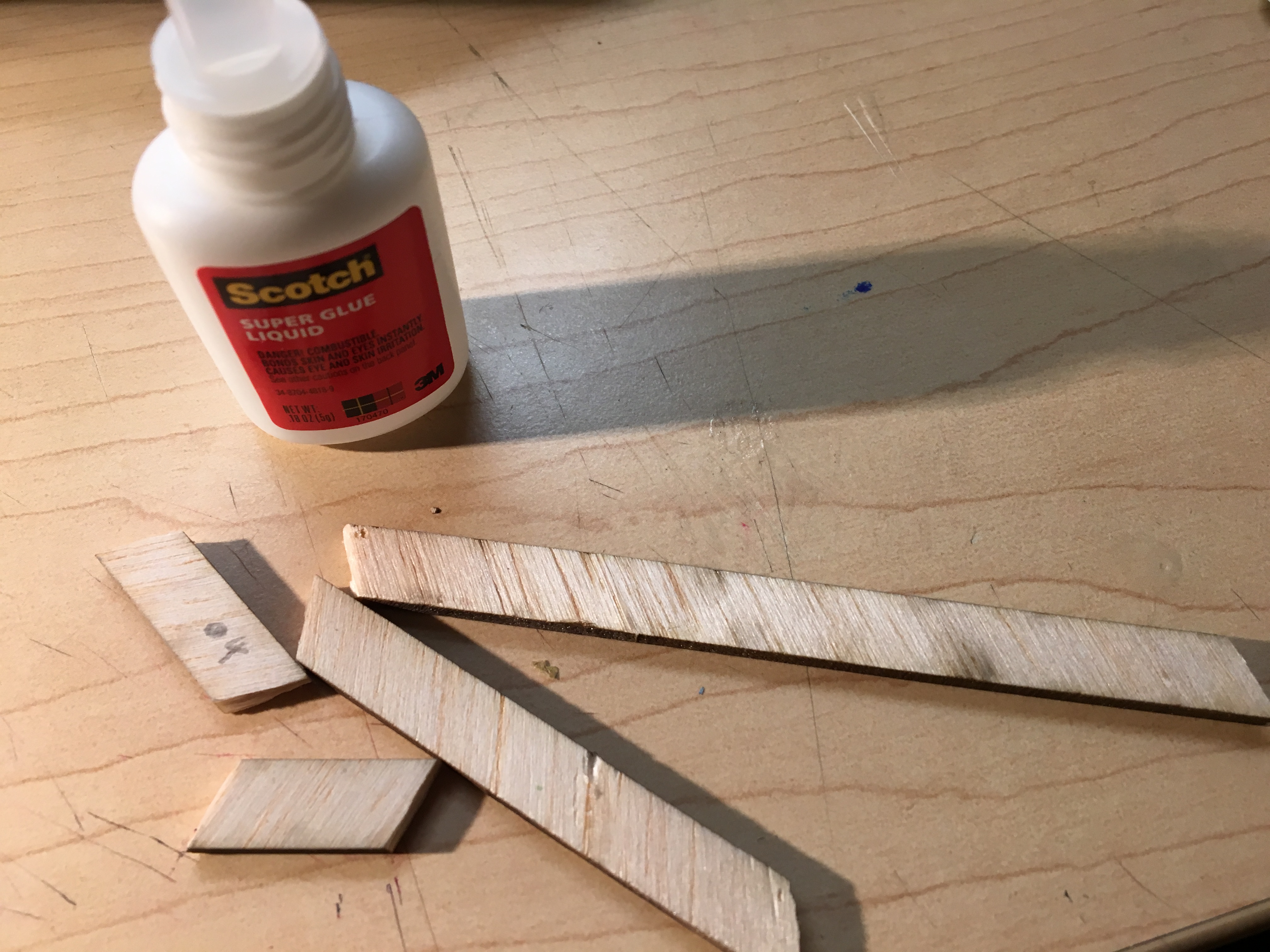1. Orthographic drawings
Isometric View
Front Elevation Side Elevation Plan View
2. 3D model
3. Process
4. Final object
5. Final object + sculpture
6. Reflection
I’ve designed a chair that follows the body curve and that has a space to put one’s stuff in. I decided to use chipboard for the medium instead of wood because from the last polygon project, I’ve realized hard wood is almost burnt during the laser cutting, while soft wood is easy to laser cut, but easily breaks. Many of my classmates glued multiple chipboard, while I engraved line on the chair because I wanted to explore different approach.
At first, I could not imagine what my final object would look like. I could not find the connection between the sculpture and the chair. However, I learned about how to draw a perfectly proportioned figure by studying vitruvian man, doing figure drawings, and by creating the sculpture. For the chair, I enjoyed designing different chair designs and coming up with my own unique chair. It was interesting because every one has different looks, but every one’s face mostly follows the rule of proportion. I did not had difficulties doing the laser cutting as I did for the last project, but it was challenging to use Sketchup and draw orthographic drawings in a proper scale. However, I strive to do it by myself first and then ask help for Jose when I could not handle it. Unlike last project, I attempted to progress class by class, revise drawings, explore different approaches to prepare for the final.
Throughout the project, I learned how every objects are precisely scaled and is perfectly proportional to human’s body. This aspect has a connection to the projects and exercises that we’ve done throughout the semester. We started by learning basic elements and polygons that perfectly fits another and we applied that through re-arranging the polygons. I did not recognize the connection of the chair, sculpture, and rest of the projects, but I realized the final project was applying all the skills that we’ve learned into the real world and real object. Space and Materiality was a challenging course for me because I have struggle to scale objects accurately, but it was a thought-provoking and inspiring course, which I learned a lot and could apply these skills for designs that I am going to do in the future.
